|
During the Second World War, food preservation became a national mandate. I've featured canning-related propaganda posters before, but I thought now would be a good time to feature a few of the lesser-known posters. The above poster is from fairly late in the war. It reads "Grow More, Can More... In '44 - Get your canning supplies now! Jars, Caps and Rings." A special seal featuring a hand (presumably Uncle Sam's) holds a basket containing the words, "Food Fights for Freedom" with "Produce and Conserve" and "Share and Play Square" above. It features a rosy-cheeked young woman in an overtly feminized take on the Women's Land Army overalls, a straw hat tilted fashionably far back on her head, and wearing spotless white work gloves. With a hoe tucked in one elbow and a thumb in her overall strap, she gestures with her free hand at an enormous set of glossy clear glass canning jars, expertly filled with whole tomatoes, halved peaches, green beans, sliced red beets, and what might be whole apricots, yellow plums, or yellow cherries, it's tough to tell. The jars feature a variety of lids, including the new aluminum screw-tops, a glass-topped wire bail with a rubber seal, and a zinc screw top with a rubber seal, illustrating the range of canning technologies still in use. The poster is photorealistic and is probably a literal cut-and-paste of actual photographs - a new technique in an era still dominated by illustrations. It's not clear exactly when this poster was released, but it's likely it was early in the season. The poster exhorts the reader to "grow more" in addition to canning more in 1944, which seems to indicate a spring release, despite the prominence of the large glass canning jars. In addition, the poster warns to stock up on canning supplies now, instead of later in the season. When aluminum was short and factories that made glass were used to produce war materiel, it was easier to make smaller quantities over a longer period of time. By planning ahead, home gardeners and canners could also make sure they had enough supplies on hand to handle an increase in garden produce. Things were getting a bit desperate in 1944 - the war was not going well and the prospect of another long year of war was troubling to ordinary Americans. Rationing had ramped up fully in 1943, and as the war dragged on home canned foods took on more importance in everyday nutrition. For many, especially children, the war must have seemed unending. Little did they know that on June 6, 1944, the United States would launch Operation Overlord - also known as the invasion of Normandy - which would become known as D-Day. D-Day would turn the tide of the war in favor of the Allies, but it would still take another fifteen months for the war to end entirely. Until then, rationing continued and Americans were urged to grow and preserve as much food as they could to supplement their rations. The war finally ended in September of 1945, and by December, rationing of every food except sugar had ended. Foods canned in 1944 would have been important support for rations, but foods canned in 1945 would have been less crucial. One wonders how many home canned foods made it to the end of 1946? We may never know. The Food Historian blog is supported by patrons on Patreon! Patrons help keep blog posts like this one free and available to the public. Join us for awesome members-only content like free digitized cookbooks from my personal collection, e-newsletter, and even snail mail from time to time! Join now for as little as $1/month.
Don't like Patreon? Leave a tip!
0 Comments
Last World War Wednesday, we looked at the use of ice cream in the U.S. Navy during the First World War, especially aboard hospital ships. Now it's time for a reprise! By the Second World War, ice cream was firmly entrenched aboard Naval vessels. So much so, that battleships and aircraft carriers were actually outfitted with ice cream machinery, and by the end of the war the Navy was training sailors in their uses through special classes. The above propaganda poster, courtesy the National Archives, outlines all of the requirements to build a battleship. "Your Battleship and Her Requirements" may have been targeted toward factory workers, but I think it is more likely this poster was designed to impress upon ordinary Americans the extraordinary amount of materials and supplies needed to keep a battleship in fighting trim. What I found particularly interesting, was that among the supplies listed, alongside fruits and vegetables and meat and even candy, was 60,000 quarts of ice cream! Smaller vessels, such as destroyer escorts and submarines, did not have the space for their own ice cream making machinery, although they did have freezers. In fact, it became common for destroyer escorts and PT boats to rescue downed pilots (the aircraft carries were too big for the job) and "ransom" them for ice cream. Last week a brand new food podcast debuted for American Public Television called "If This Food Could Talk," and I'm so pleased to say I was featured in the first episode, "Frozen in Time: Ice Cream and America's Past." I had a blast doing the research for that episode's interview, which has inspired these two recent World War Wednesday posts. Have a listen if you want to learn more about ice cream in American history, and especially the story of ice cream in the Navy. But while I was doing the research, I kept running across references to ice cream as a health food! The National Dairy Council really leaned into the notion of ice cream and the armed forces. This advertisement reads, "There's a reason why the U.S. Navy serves Ice Cream. America's favorite dairy food - Ice Cream - is an important source of vitamins, proteins and minerals." The ad goes on: "Navy menus don't just happen! Every food included in the diet of Navy personnel, ashore or afloat, is there for a purpose. It is there because it has been okayed by the staff of experts at the Subsistence Research Laboratory of the U.S. Navy in Chicago for making an important contribution to the health, strength, and morale fighters must have to win! "These highly skilled and trained technicians at the laboratory know every condition under which the men live - know their requirements - and make sure exactly what each food will do for those men before it is approved. "That is why it is significant that ice cream ranks so high on Navy menus. It is not only a favorite food, but it also supplies valuable vitamins, proteins, and minerals. For that reason, wherever practical, the Navy gets ice cream! "Throughout the world - over the seven seas - the talents of the Subsistence Research Laboratory of the U.S. Navy are directed to keeping our Navy a strong, healthy, hard-hitting force; making sure it gets the foods the men like - the foods they need for victory! "Ice Cream Is a Fighting Food "Ice cream is a favorite with all branches of our armed forces - and it is important that they get this valuable food. So fi you aren't always able to get all the ice cream you want - remember, you're 'sharing' this nutritious food with our fighters." The National Dairy Council might be just a SMIDGE biased in this regard, but certainly the federal government ranked milk, and by extension milk products, very highly in terms of nutrition during the Second World War, notably as part of the Basic 7 nutrition recommendations. This was almost certainly a holdover from the Progressive Era's take on milk as the "perfect food" - combining proteins, carbohydrates, and fats all in one. We see this in another advertisement, this time by the National Dairy Products Corporation. The National Dairy Council is an industry-funded research and marketing organization. But the National Dairy Products Corporation would later become Kraft Foods. "Here's what one leatherneck dreams about! "One Marine's dream of the post-war world is a mountain of strawberry ice cream. He wrote his girl from Guadalcanal that he wants it three times a day, every day for five years. In standard servings, that's over 900 quarts! "Strawberry ice cream was a symbol, of course, to a hot, tired fighting man in a fox-hole - a symbol of his home town and the corner drug store - a symbol of America. It must have appealed to lots of folks, for many newspapers carried the story. "There are good reasons why ice cream is on Army menus regularly - good reason why busy war workers eat so much of it. It is more than a delicious dessert - it's a valuable food - rich in vitamins and calcium. "Right now, of course, ice cream must come from the same milk supply that furnishes milk, cream, butter and cheese to soldiers, civilians and allies alike. That means less ice cream for your family's use. If you'll be content with your fair share - if you'll accept part of your order in fruit ices - you can continue to enjoy ice cream. "And we'll continue to improve ice cream processing and packaging - controlling its quality - keeping it pure and good. "We'll continue our intensive laboratory research... developing important new products from milk... bringing to America's fighters, workers and friendly allies the full benefits of nature's most nearly perfect food." Here you can see the "perfect food" rhetoric in action! And interestingly, this one touts the role of ice cream in the Army as well. In my opinion ice cream, for all the rhetoric about nutrition, had far more to do with morale than anything else. But there is some truth to the idea that as a dessert it was superior to cake or pie. For one thing, ice cream does have some protein, in addition to a decent amount of fat. Full fat dairy is generally proven to be more filling and satisfying and protein and fat slow down the absorption of sugar directly into the bloodstream, making the "energy-giving" properties of carbohydrates longer-lasting and less likely to make you crash (unlike cake and cookies). That being said, viewing ice cream as a health food is questionable today. But in the period, the discoveries of vitamins and minerals like calcium were cutting-edge, and any food containing those essential nutrients was considered good for you. Ice cream also fit neatly into ideas (unconscious or otherwise) of White supremacy and American (i.e. Anglo-Saxon) culture. As the National Dairy Products Corporation marketing team wrote, ice cream was "a symbol of America." When combined with soda fountains (the wholesome, if sugary, alternative to saloons and beer halls), ice cream seemed to represent the best of America - slim, good-looking, young, White America, that is. Today, ice cream's modern accessibility has given us ice cream alternatives aplenty, especially for folks who can't consume dairy. Ice cream's ubiquity has also meant some of its luster has faded. But at a time of extreme stress - the violence of the theater of war, the privations of home front rationing, the push to mobilize for total war, the fear of invasion - ice cream provided a moment of bliss in the midst of uncertainty. Ice cream is still an essential tradition aboard Naval vessels today. When you're miles from home for months at a time, anything that seems like a treat gives morale a boost. It's still a treasured treat in our household, whether homemade or store bought (if you find yourself in upstate New York - do yourself a favor and seek out Stewart's Shops. They have the best commercial ice cream around). What does ice cream mean to you? The Food Historian blog is supported by patrons on Patreon! Patrons help keep blog posts like this one free and available to the public. Join us for awesome members-only content like free digitized cookbooks from my personal collection, e-newsletter, and even snail mail from time to time! A special patrons-only post is coming tomorrow with more on ice cream in World War II - this time featuring Elsie the Cow! Join now for as little as $1/month.
Don't like Patreon? Leave a tip! When you think of rationing in World War II, you may not think of peanuts, but they played an outsized role in acting as a substitute for a lot of otherwise tough-to-find foodstuffs, mainly other vegetable fats. When the United States entered the war in December, 1941, after the Japanese attack on Pearl Harbor, the dynamic of trade in the Pacific changed dramatically. The United States had come to rely on cocoanut oil from the then-American colonial territory of the Philippines and palm oil from Southeast Asia for everything from cooking and the production of foods like margarine to the manufacture of nitroglycerine and soap. Vegetable oils like coconut, palm, and cottonseed were considered cleaner and more sanitary than animal fats, which had previously been the primary ingredient in soap, shortening, and margarine. But when the Pacific Ocean became a theater of war, all but domestic vegetable oils were cut off. Cottonseed was still viable, but it was considered a byproduct of the cotton industry, not an product in and of itself, and therefore difficult to expand production. Soy was growing in importance, but in 1941 production was low. That left a distinctly American legume - the peanut. Peanuts are neither a pea nor a nut, although like peas they are a legume. Unlike peas, the seed pods grow underground, in tough papery shells. Native to the eastern Andes Mountains of South America, they were likely introduced to Europe by the Spanish. European colonizers then also introduced them to Africa and Southeast Asia. In West Africa, peanuts largely replaced a native groundnut in local diets. They were likely imported to North America by enslaved people from West Africa (where peanut production may have prolonged the slave trade). Peanuts became a staple crop in the American South largely as a foodstuff for enslaved people and livestock, but the privations of White middle and upper classes during the American Civil War expanded the consumption of peanuts to all levels of society. Union soldiers encountered peanuts during the war and liked the taste. The association of hot roasted peanuts with traveling circuses in the latter half of the 19th century and their use in candies like peanut brittle also helped improve their reputation. Peanuts are high in protein and fats, and were often used as a meat substitute by vegetarians in the late 19th century. Peanut loaf, peanut soup, and peanut breads were common suggestions, although grains and other legumes still held ultimate sway. George Washington Carver helped popularize peanuts as a crop in the early 20th century. Peanuts are legumes and thus fix nitrogen to the soil. With the cultivation of sweet potatoes, Carver saw peanuts as a way to restore soil depleted by decades of cotton farming, giving Black farmers a way to restore the health of their land while also providing nutritious food for their families and a viable cash crop. During the First World War, peanut production expanded as peanut oil was used to make munitions and peanuts were a recommended ration-friendly food. But it was consumer's love of the flavor and crunch of roasted peanuts that really drove post-war production. By the 1930s, the sale of peanuts had skyrocketed. No longer the niche boiled snack food of Southerners or ground into meal for livestock, peanuts were everywhere. Peanut butter and jelly (and peanut butter and mayonnaise) became popular sandwich fillings during the Great Depression. Roasted peanuts gave popcorn a run for its money at baseball games and other sporting events. Peanut-based candy bars like Baby Ruth and Snickers were skyrocketing in sales. And roasted, salted, shelled peanuts were replacing the more expensive salted almonds at dinner parties and weddings. Peanuts were even included as a "basic crop" in attempts by the federal government to address agricultural price control. They were included in the 1929 Agricultural Marketing Act, the Agricultural Adjustment Act of 1933, and an April, 1941 amendment to the Agricultural Adjustment Act of 1938. Peanuts were included in farm loan support and programs to ensure farmers got a share of defense contracts. By the U.S. entry into World War II, most peanuts were being used in the production of peanut butter. And while Americans enjoyed them as a treat, their savory applications were ultimately less popular as an everyday food. But their use as source of high-quality oil was their main selling point during the Second World War. Peanut oil was the primary fuel in Rudolf Diesel's first engine, which debuted in 1900 at the Paris World's Fair. Its very high smoke point has made it a favorite of cooks around the world. During the Second World War peanut oil was used to produce margarine, used in salad dressings and as a butter and lard substitute in cooking and frying. But like other fats, its most important role was in the production of glycerin and nitroglycerine - a primary component in explosives. Which brings us to our imagery in the above propaganda poster. "Mr. Peanut Goes to War!" the poster cries. Produced by the United States Department of Agriculture, it features an anthropomorphized peanut in helmet and fatigues, carrying a rifle, bayonet fixed, marching determinedly across a battlefield, with a tank in the background. Likely aimed at farmers instead of ordinary households, Mr. Peanut of the USDA was nothing like the monocled, top-hatted suave character Planter's introduced in 1916. This Mr. Peanut was tough, determined to do his part, and aid in the war effort. The USDA expected farmers (including African American farmers) to do the same. Further Reading: Note: Amazon purchases from these links help support The Food Historian.
The Food Historian blog is supported by patrons on Patreon! Patrons help keep blog posts like this one free and available to the public. Join us for awesome members-only content like free digitized cookbooks from my personal collection, e-newsletter, and even snail mail from time to time! Don't like Patreon? Leave a tip!
The short answer? At least in the United States? Yes. Let's look at the history and the reasons why. I post a lot of propaganda posters for World War Wednesday, and although it is implied, I don't point out often enough that they are just that - propaganda. They are designed to alter peoples' behavioral patterns using a combination of persuasion, authority, peer pressure, and unrealistic portrayals of culture and society. In the last several months of sharing propaganda posters on social media for World War Wednesday, I've gotten a couple of comments on how much they reflect an exclusively White perspective. Although White Anglo-Saxon Protestant culture was the dominant culture in the United States at the time, it was certainly not the only culture. And its dominance was the result of White supremacy and racism. This is reflected in the nutritional guidelines and nutrition science research of the time. The First World War takes place during the Progressive Era under a president who re-segregated federal workplaces that had been integrated since Reconstruction. It was also a time when eugenics was in full swing, and the burgeoning field of nutrition science was using racism as justifications for everything from encouraging assimilation among immigrant groups by decrying their foodways and promoting White Anglo-Saxon Protestant foodways like "traditional" New England and British foods to encouraging "better babies" to save the "White race" from destruction. Nutrition science research with human subjects used almost exclusively adult White men of middle- and upper-middle class backgrounds - usually in college. Certain foods, like cow's milk, were promoted heavily as health food. Notions of purity and cleanliness also influenced negative attitudes about immigrants, African Americans, and rural Americans. During World War II, Progressive-Era-trained nutritionists and nutrition scientists helped usher in a stereotypically New England idea of what "American" food looked like, helping "kill" already declining regional foodways. Nutrition research, bolstered by War Department funds, helped discover and isolate multiple vitamins during this time period. It's also when the first government nutrition guidelines came out - the Basic 7. Throughout both wars, the propaganda was focused almost exclusively on White, middle- and upper-middle-class Americans. Immigrants and African Americans were the target of some campaigns for changing household habits, usually under the guise of assimilation. African Americans were also the target of agricultural propaganda during WWII. Although there was plenty of overt racism during this time period, including lynching, race massacres, segregation, Jim Crow laws, and more, most of the racism in nutrition, nutrition science, and home economics came in two distinct types - White supremacy (that is, the belief that White Anglo-Saxon Protestant values were superior to every other ethnicity, race, and culture) and unconscious bias. So let's look at some of the foundations of modern nutrition science through these lenses. Early Nutrition ScienceNutrition Science as a field is quite young, especially when compared to other sciences. The first nutrients to be isolated were fats, carbohydrates, and proteins. Fats were the easiest to determine, since fat is visible in animal products and separates easily in liquids like dairy products and plant extracts. The term "protein" was coined in the 1830s. Carbohydrates began to be individually named in the early 19th century, although that term was not coined until the 1860s. Almost immediately, as part of nearly any early nutrition research, was the question of what foods could be substituted "economically" for other foods to feed the poor. This period of nutrition science research coordinated with the Enlightenment and other pushes to discover, through experimentation, the mechanics of the universe. As such, it was largely limited to highly educated, White European men (although even Wikipedia notes criticism of such a Euro-centric approach). As American colleges and universities, especially those driven by the Hatch Act of 1877, expanded into more practical subjects like agriculture, food and nutrition research improved. American scientists were concerned more with practical applications, rather than searching for knowledge for knowledge's sake. They wanted to study plant and animal genetics and nutrition to apply that information on farms. And the study of human nutrition was not only to understand how humans metabolized foods, but also to apply those findings to human health and the economy. But their research was influenced by their own personal biases, conscious and unconscious. The History of Body Mass Index (BMI)Body Mass Index, or BMI, is a result of that same early 19th century time period. It was invented by Belgian mathematician Lambert Adolphe Jacques Quetelet in the 1830s and '40s specifically as a "hack" for determining obesity levels across wide swaths of population, not for individuals. Quetelet was a trained astronomist - the one field where statistical analysis was prevalent. Quetelet used statistics as a research tool, publishing in 1835 a book called Sur l'homme et le développement de ses facultés, ou Essai de physique sociale, the English translation of which is usually called A Treatise on Man and the Development of His Faculties. In it, he discusses the use of statistics to determine averages for humanity (mainly, White European men). BMI became part of that statistical analysis. Quetelet named the index after himself - it wasn't until 1972 that researcher Ancel Keys coined the term "Body Mass Index," and as he did so he complained that it was no better or worse than any other relative weight index. Quetelet's work went on to influence several famous people, including Francis Galton, a proponent of social Darwinism and scientific racism who coined the term "eugenics," and Florence Nightingale, who met him in person. As a tool for measuring populations, BMI isn't bad. It can look at statistical height and weight data and give a general idea of the overall health of population. But when it is used as a tool to measure the health of individuals, it becomes extremely flawed and even dangerous. Quetelet had to fudge the math to make the index work, even with broad populations. And his work was based on White European males who he considered "average" and "ideal." Quetelet was not a nutrition scientist or a doctor - this "ideal" was purely subjective, not scientific. Despite numerous calls to abandon its use, the medical community continues to use BMI as a measure of individual health. Because it is a statistical tool not based on actual measures of health, BMI places people with different body types in overweight and obese categories, even if they have relatively low body fat. It can also tell thin people they are healthy, even when other measurements (activity level, nutrition, eating disorders, etc.) are signaling an unhealthy lifestyle. In addition, fatphobia in the medical community (which is also based on outdated ideas, which we'll get to) has vilified subcutaneous fat, which has less impact on overall health and can even improve lifespans. Visceral fat, or the abdominal fat that surrounds your organs, can be more damaging in excess, which is why some scientists and physicians advocate for switching to waist ratio measurements. So how is this racist? Because it was based on White European male averages, it often punishes women and people of color whose genetics do not conform to Quetelet's ideal. For instance, people with higher muscle mass can often be placed in the "overweight" or even "obese" category, simply because BMI uses an overall weight measure and assumes a percentage of it is fat. Tall people and people with broader than "ideal" builds are also not accurately measured. The History of the CalorieAlthough more and more people are moving away from measuring calories as a health indicator, for over 100 years they have reigned as the primary measure of food intake efficiency by nutritionists, doctors, and dieters alike. The calorie is a unit of heat measurement that was originally used to describe the efficiency of steam engines. When Wilbur Olin Atwater began his research into how the human body metabolizes food and produces energy, he used the calorie to measure his findings. His research subjects were the White male students at Wesleyan University, where he was professor. Atwater's research helped popularize the idea of the calorie in broader society, and it became essential learning for nutrition scientists and home economists in the burgeoning field - one of the few scientific avenues of study open to women. Atwater's research helped spur more human trials, usually "Diet Squads" of young middle- and upper-middle-class White men. At the time, many papers and even cookbooks were written about how the working poor could maximize their food budgets for effective nutrition. Socialists and working class unionists alike feared that by calculating the exact number of calories a working man needed to survive, home economists were helping keep working class wages down, by showing that people could live on little or inexpensive food. Calculating the calories of mixed-food dishes like casseroles, stews, pilafs, etc. was deemed too difficult, so "meat and three" meals were emphasized by home economists. Making "American" FoodEfforts to Americanize and assimilate immigrants went into full swing in the late 19th and early 20th centuries as increasing numbers of "undesirable" immigrants from Ireland, southern Italy, Greece, the Middle East, China, Eastern Europe (especially Jews), Russia, etc. poured into American cities. Settlement workers and home economists alike tried to Americanize with varying degrees of sensitivity. Some were outright racist, adopting a eugenics mindset, believing and perpetuating racist ideas about criminology, intelligence, sanitation, and health. Others took a more tempered approach, trying to convince immigrants to give up the few things that reminded them of home - especially food. These often engaged in the not-so-subtle art of substitution. For instance, suggesting that because Italian olive oil and butter were expensive, they should be substituted with margarine. Pasta was also expensive and considered to be of dubious nutritional value - oatmeal and bread were "better." A select few realized that immigrant foodways were often nutritionally equivalent or even superior to the typical American diet. But even they often engaged in the types of advice that suggested substituting familiar ingredients with unfamiliar ones. Old ideas about digestion also influenced food advice. Pickled vegetables, spicy foods, and garlic were all incredibly suspect and scorned - all hallmarks of immigrant foodways and pushcart operators in major American cities. The "American" diet advocated by home economists was highly influenced by Anglo-Saxon and New England ideals - beef, butter, white bread, potatoes, whole cow's milk, and refined white sugar were the nutritional superstars of this cuisine. Cooking foods separately with few sauces (except white sauce) was also a hallmark - the "meat and three" that came to dominate most of the 20th century's food advice. Rooted in English foodways, it was easy for other Northern European immigrants to adopt. Although French haute cuisine was increasingly fashionable from the Gilded Age on, it was considered far out of reach of most Americans. French-style sauces used by middle- and lower-class cooks were often deemed suspect - supposedly disguising spoiled meat. Post-Civil War, Yankee New England foodways were promoted as "American" in an attempt to both define American foodways (which reflected the incredibly diverse ecosystems of the United States and its diverse populations) and to unite the country after the Civil War. Sarah Josepha Hale's promotion of Thanksgiving into a national holiday was a big part of the push to define "American" as White and Anglo-Saxon. This push to "Americanize" foodways also neatly ignores or vilifies Indigenous, Asian-American, and African American foodways. "Soul food," "Chinese," and "Mexican" are derided as unhealthy junk food. In fact, both were built on foundations of fresh, seasonal fruits, vegetables, and whole grains. But as people were removed from land and access to land, the they adapted foodways to reflect what was available and what White society valued - meat, dairy, refined flour, etc. Asian food in particular was adapted to suit White palates. We won't even get into the term "ethnic food" and how it implies that anything branded as such isn't "American" (e.g. White). Divorcing foodways from their originators is also hugely problematic. American food has a big cultural appropriation problem, especially when it comes to "Mexican" and "Asian" foods. As late as the mid-2000s, the USDA website had a recipe for "Oriental salad," although it has since disappeared. Instead, we get "Asian Mango Chicken Wraps," and the ingredients of mango, Napa cabbage, and peanut butter are apparently what make this dish "Asian," rather than any reflection of actual foodways from countries in Asia. Milk - The Perfect FoodCombining both nutrition research of the 19th century and also ideas about purity and sanitation, whole cow's milk was deemed by nutrition scientists and home economists to be "the perfect food" - as it contained proteins, fats, and carbohydrates, all in one package. Despite issues with sanitation throughout the 19th century (milk wasn't regularly pasteurized until the 1920s), milk became a hallmark of nutrition advice throughout the Progressive Era - advice which continues to this day. Throughout the history of nutritional guidelines in the U.S., milk and dairy products have remained a mainstay. But the preponderance of advice about dairy completely ignores that wide swaths of the population are lactose intolerant, and/or did not historically consume dairy the way Europeans did. Indigenous Americans, and many people of African and Asian descent historically did not consume cow's milk and their bodies often do not process it well. This fact has been capitalized upon by both historic and modern racists, as milk as become a symbol of the alt-right. Even today, the USDA nutrition guidelines continue to recommend at least three servings of dairy per day, an amount that can cause long term health problems in communities that do not historically consume large amounts of dairy. Nutrition Guidelines HistoryBecause Anglo-centric foodways were considered uniquely "American" and also the most wholesome, this style of food persisted in government nutritional guidelines. Government-issued food recommendations and recipes began to be released during the First World War and continued during the Great Depression and World War II. These guidelines and advice generally reinforced the dominant White culture as the most desirable. Vitamins were first discovered as part of research into the causes of what would come to be understood as vitamin deficiencies. Scurvy (Vitamin C deficiency), rickets (Vitamin D deficiency), beriberi (Vitamin B1 or thiamine deficiency), and pellagra (Vitamin B2 or niacin deficiency) plagued people around the world in the 19th and early 20th centuries. Vitamin C was the first to be isolated in 1914. The rest followed in the 1930s and '40s. Vitamin fortification took off during World War II. The Basic 7 guidelines were first released during the war and were based on the recent vitamin research. But they also, consciously or not, reinforced white supremacy through food. Confident that they had solved the mystery of the invisible nutrients necessary for human health, American nutrition scientists turned toward reconfiguring them every which way possible. This is the history that gives us Wonder Bread and fortified breakfast cereals and milk. By divorcing vitamins from the foods in which they naturally occur (foods that were often expensive or scarce), nutrition scientists thought they could use equivalents to maintain a healthy diet. As long as people had access to vitamins, carbohydrates, proteins, and fats, it didn't matter how they were delivered. Or so they thought. This policy of reducing foods to their nutrients and divorcing food from tradition, culture, and emotion dates back to the Progressive Era and continues to today, sometimes with disastrous consequences. Commodities & NutritionDivorcing food from culture is one government policy Indigenous people understand well. U.S. treaty violations and land grabs led to the reservation system, which forcibly removed Native people from their traditional homelands, divorcing them from their traditional foodways as well. Post-WWII, the government helped stabilize crop prices by purchasing commodity foods for use in a variety of programs operated by the United States Department of Agriculture (USDA), including the National School Lunch Program, Special Supplemental Nutrition Program for Women, Infants, and Children (WIC), and the Food Distribution Program on Indian Reservations (FDPIR) program. For most of these programs, the government purchases surplus agricultural commodities to help stabilize the market and keep prices from falling. It then distributes the foods to low-income groups as a form of food assistance. Commodity foods distributed through the FDPIR program were generally canned and highly processed - high in fat, salt, and sugar and low in nutrients. This forced reliance on commodity foods combined with generational trauma and poverty led to widespread health disparities among Indigenous groups, including diabetes and obesity. Which is why I was appalled to find this cookbook the other day. Commodity Cooking for Good Health, published by the USDA in 1995 (1995!) is a joke, but it illustrates how pervasive and long-lasting the false equivalency of vitamins and calories can be. The cookbook starts with an outline of the 1992 Food Pyramid, whose base rests on bread, pasta, cereal, and rice. It then goes to outline how many servings of each group Indigenous people should be eating, listing 2-3 servings a day for the dairy category, but then listing only nonfat dry milk, evaporated milk, and processed cheese as the dairy options. In the fruit group, it lists five different fruit juices as servings of fruit. It has a whole chapter on diabetes and weight loss as well as encouraging people to count calories. With the exception of a recipe for fry bread, one for chili, and one for Tohono O'odham corn bread, the remainder of the recipes are extremely European. Even the "Mesa Grande Baked Potatoes" are not, as one would assume from the title, a fun take on baked whole potatoes, but rather a mixture of dehydrated mashed potato flakes, dried onion soup mix, evaporated milk, and cheese. You can read the whole cookbook for yourself, but the fact of the matter is that the USDA is largely responsible for poor health on reservations, not only because it provides the unhealthy commodity foods, but also because it was founded in 1862, the height of the Indian Wars, during attempts by the federal government at genocide and successful land grabs. Although the Bureau of Indian Affairs (BIA) under the Department of the Interior was largely responsible for the reservation system, the land grant agricultural college system started by the Hatch Act was literally built on the sale of stolen land. In addition, the USDA has a long history of dispossessing Black farmers, an issue that continues to this day through the denial of farm loans. Thanks to redlining, people of color, especially Black people, often live in segregated school districts whose property taxes are inadequate to cover expenses. Many children who attend these schools are low-income, and rely on free or reduced lunch delivered through the National School Lunch Program, which has been used for decades to prop up commodity agriculture. Although school lunch nutrition efforts have improved in recent years, many hot lunches still rely on surplus commodities and provide inadequate nutrition. Issues That PersistEven today, the federal nutrition guidelines, administered by the USDA, emphasize "meat and three" style meals accompanied by dairy. And while the recipe section is diversifying, it is still all-too-often full of Americanized versions of "ethnic" dishes. Many of the dishes are still very meat- and dairy-centric, and short on fresh fruits and vegetables. Some recipes, like this one, seem straight out of 1956. The idea that traditional ingredients should be replaced with "healthy" variations, for instance always replacing white rice with brown rice or, more recently cauliflower rice, continues. Many nutritionists also push the Mediterranean Diet as the healthiest in the world, when in fact it is very similar to other traditional diets around the world where people have access to plenty of unsaturated fats, fruits and vegetables, whole grains, lean meats, etc. Even the name - the "Mediterranean Diet," implies the diets of everyone living along the Mediterranean. So why does "Mediterranean" always mean Italian and Greek food, and never Persian, Egyptian, or Tunisian food? (Hint: the answer is racism). Old ideas about nutrition, including emphasis on low-fat foods, "meat and three" style recipes, replacement ingredients (usually poor cauliflower), and artificial sweeteners for diabetics, seem hard to shake for many people. Doctors receive very little training in nutrition and hospital food is horrific, as I saw when my father-in-law was hospitalized for several weeks in 2019. As a diabetic with problems swallowing, pancakes with sugar-free syrup, sugar-free gelatin and pudding, and not much else were their solution to his needs. The modern field of nutritionists is also overwhelmingly White, and racism persists, even towards trained nutritionists of color, much less communities of color struggling with health issues caused by generational trauma, food deserts, poverty, and overwork. Our modern food system has huge structural issues that continue to today. Why is the USDA, which is in charge of promoting agriculture at home and abroad, in charge of federal nutrition programs? Commodity food programs turn vulnerable people into handy props for industrial agriculture and the economy, rather than actually helping vulnerable people. Federal crop subsidies, insurance, and rules assigns way more value to commodity crops than fruits and vegetables. This government support also makes it easy and cheap for food processors to create ultra-processed, shelf-stable, calorie-dense foods for very little money - often for less than the crops cost to produce. This makes it far cheaper for people to eat ultra-processed foods than fresh fruits and vegetables. The federal government also gives money to agriculture promotion organizations that use federal funds to influence American consumers through advertising (remember the "Got Milk?" or "The Incredible, Edible Egg" marketing? That was your taxpayer dollars at work), regardless of whether or not the foods are actually good for Americans. Nutrition science as a field has a serious study replication problem, and an even more serious communications problem. Although scientists themselves usually do not make outrageous claims about their findings, the fact that food is such an essential part of everyday life, and the fact that so many Americans are unsure of what is "healthy" and what isn't, means that the media often capitalizes on new studies to make over-simplified announcements to drive viewership. Key TakeawaysNutrition science IS a science, and new discoveries are being made everyday. But the field as a whole needs to recognize and address the flawed scientific studies and methods of the past, including their racism - conscious or unconscious. Nutrition scientists are expanding their research into the many variables that challenge the research of the Progressive Era, including gut health, environmental factors, and even genetics. But human research is expensive, and test subjects rarely diverse. Nutrition science has a particularly bad study replication problem. If the government wants to get serious about nutrition, it needs to invest in new research with diverse subjects beyond the flawed one-size-fits-all rhetoric. The field of nutrition - including scientists, medical professionals, public health officials, and dieticians - need to get serious about addressing racism in the field. Both their own personal biases, as well as broader institutional and cultural ones. Anyone who is promoting "healthy" foods needs to think long and hard about who their audience is, how they're communicating, and what foods they're branding as "unhealthy" and why. We also need to address the systemic issues in our food system, including agriculture, food processing, subsidies, and more. In particular, the government agencies in charge of nutrition advice and food assistance need to think long and hard about the role of the federal government in promoting human health and what the priorities REALLY are - human health? or the economy? There is no "one size fits all" recommendation for human health. Ever. Especially not when it comes to food. Because nutrition guidelines have problems not just with racism, but also with ableism and economics. Not everyone can digest "healthy" foods, either due to medical issues or medication. Not everyone can get adequate exercise, due to physical, mental, or even economic issues. And I would argue that most Americans are not able to afford the quality and quantity of food they need to be "healthy" by government standards. And that's wrong. Like with human health, there are no easy solutions to these problems. But recognizing that there is a problem is the first step on the path to fixing them. Further ReadingMany of these were cited in the text of the article above, but they are organized here for clarity. I have organized them based on the topics listed above. (note: any books listed below are linked as part of the Amazon Affiliate program - any purchases made from those links will help support The Food Historian's free public articles like this one). EARLY NUTRITION SCIENCE
A HISTORY OF BODY MASS INDEX (BMI)
THE HISTORY OF THE CALORIE
MAKING "AMERICAN" FOOD
MILK - THE PERFECT FOOD
NUTRITION GUIDELINES HISTORY
COMMODITIES AND NUTRITION
ISSUES THAT PERSIST
The Food Historian blog is supported by patrons on Patreon! Patrons help keep blog posts like this one free and available to the public. Join us for awesome members-only content like free digitized cookbooks from my personal collection, e-newsletter, and even snail mail from time to time! Don't like Patreon? Leave a tip!
You may be wondering, what on earth do ammonia and engineers have to do with food history? Well, ammonia was one of the primary ingredients in creating artificial ice in the late 19th and early 20th centuries. The poster above shows Uncle Sam brandishing a wrench, hand on the shoulder of an older engineer, who reclines in a chair reading the newspaper. One sheet of the newspaper has fallen to the floor, and we can make out "War" in the headline. In the background we can see the outlines of pipes and valves. The poster reads "ENGINEER - If you are a patriot, If this is your fight, Get Into It - Stop the Ammonia Leaks." The top of the poster indicates it was sponsored by both the United States Food Administration and the National Association of Ice Industries. Refrigeration was changing rapidly in the 1900s. Most of the country still refrigerated with "natural ice," or ice harvested in winter from freshwater sources like lakes and rivers. But "artificial ice," that is water frozen mechanically, was gaining ground. Artificial ice making factories had been around since the 1870s, but they were costly and inefficient, used primarily in warmer climes where shipping natural ice was too inefficient. The primary refrigerant in these factories was ammonia, which has explosive properties. In fact, ammonia is a primary component in making gunpowder and explosives, and obviously demand for its use went up exponentially when the U.S. joined the First World War in April of 1917. Ammonia cools through compression. Jonathan Reese in Before the Refrigerator: How We Used to Get Ice (Amazon affiliate link) explains the process: The compression refrigeration cycle depends on the compressor forcing a refrigerant around a system of coils. A refrigerant is any substance that can be used to draw heat away from an adjoining space, but some refrigerants worked much better than others. During the late nineteenth century, most American refrigerating machines used ammonia as their refrigerant. The main advantage of ammonia was that it was very efficient. In other words, it has a very low vaporizing temperature (or boiling point) at which it will turn from a liquid into a gas. This means that it required less energy to propel it through the cycle and remove heat from whatever space or substance that the operator needed to become cold. If ammonia leaked through the pipes of these early machines (which it was prone to do), under certain circumstances it could even explode, as the New York packing house example described above illustrates.¹⁰ Most American refrigerating equipment manufacturers didn’t realize that until ammonia compression refrigeration systems had become extremely popular.¹¹ Cold storage also increased in use during the First World War, and refrigerated railroad cars, which helped drive agricultural specialization in fruits and vegetables around the country (Georgia peaches, Florida oranges, Michigan cherries, New York apples, and California's salad bowl), depended on ice for refrigeration and cooling. Ice was the invisible ingredient in the nation's food system. The National Association of Ice Industries was founded in August, 1917 in Chicago, IL as ice harvesters, producers, and distributors gathered at a conference. Realizing the importance of the ice trade in food preservation and conservation, the association vowed to cooperate with the government as part of the war effort. The conference proceedings were reported in Refrigerating World, the industry's trade journal, in the September, 1917 issue. In addition to forming the National Association of Ice Industries on the second day of the conference, the attendees also discussed convincing farmers of the benefits of cold storage and encouraging them to construct ice houses on their farms, of convincing the public that using ice and refrigeration would reduce food waste and save money, and finally of reducing inefficiencies in delivery, including advocating for one delivery service making one delivery per day to prevent competing delivery companies from wasting manpower, horsepower, and ice. Wartime not only necessitated the conservation of ammonia, but also gave the natural ice industry a boost. Already in decline due to concerns about polluted waterways, the natural ice industry was encouraged to revive as another way to conserve ammonia and the fuel that powered the steam engines and electric motors that powered the refrigerating process. The revival would ultimately be short-lived. The end of the First World War all but ended the natural ice industry. As refrigerants became abundant again and energy prices came back down, the demand for artificial ice went up. The advent of electric home refrigerators in the 1920s ultimately signaled the end of the household ice box, and the deliveries that went with it. Read More: The Amazon affiliate links below help support The Food Historian
Home canning was promoted as essential to the war effort in both World Wars, but the First World War introduced ordinary Americans to a lot of research on the effectiveness and science of home canning. Although safe canning was still in its infancy (water bath canning low-acid vegetables was still sometimes recommended by home economists at this time, which we now know is not safe), approaching it with a scientific method was new to most Americans. This particular poster's purpose is unclear. Perhaps it was meant to demonstrate the best method of fitting fruits and vegetables into the jars. It is certainly beautiful. The unknown artist illustrated the clear glass wire bail quart and pint jars beautifully. Three quart jars are across the top containing perfectly layered halves of peaches, whole blackberries, and white Queen Anne cherries. Three pint jars across the bottom contain trimmed okra stacked vertically and horizontally, yellow wax beans (labeled "string beans"), which may have been pickled as a tiny red chile pepper can be seen near the bottom of the jar, and "soup mixture" containing white navy or cannellini beans and a red broth that likely contains tomatoes. Wire bail jars work by using rubber gaskets in between the glass jar and a glass lid to get the seal, held in place by tight wire clamps. Although beautiful, they are not recommended today for safe canning. They do, however, make effective and beautiful storage vessels for dry goods like flour, dried beans, spices, dried fruit, etc. (I recommend storing nuts in the freezer to prolong freshness.) Glass wire bail jars were common in the 1910s for home canning and became particularly important for the war effort as aluminum and tin became scarce due to their use in commercial canning and in wartime manufacturing. The poster interestingly includes vegetables in wire bail jars and even bean soup, which is not generally recommended to be canned with the water bath method. If the beans were pickled, they could be safely water-bath canned, but other low-acid vegetables like okra (unless also pickled) need to be pressure-canned to prevent the growth of botulism, a deadly toxin that can survive boiling temperatures. Although pressure canners existed during WWI, they were not in widespread use as they required the purchase of specialized equipment. Community canning kitchens were developed in large part to help housewives share the cost (and use) of more expensive equipment like pressure canners, steam canners, etc. This poster is from the United States Department of Agriculture (USDA) and is labeled "Home Demonstration Work," which indicates it may have been used by home demonstration agents, or trained home economists hired by the USDA, cooperative extension offices, or local Farm Bureaus to train housewives in best practices for home management, including food preparation and preservation. Home demonstration work was in its infancy during World War I, and expanded greatly after the war. What do you think the purpose of this poster is? Share in the comments! The Food Historian blog is supported by patrons on Patreon! Patrons help keep blog posts like this one free and available to the public. Join us for awesome members-only content like free digitized cookbooks from my personal collection, e-newsletter, and even snail mail from time to time! Don't like Patreon? Leave a tip!
This is one of the more famous food-related posters of the First World War. Created by famous illustrator and artist James Montgomery Flagg, "Sow the Seeds of Victory," and its sister poster (below) "Will you have a part in Victory?" were both produced by the National War Garden Commission, headed by Charles Lathrop Pack. The bottom of each poster reads "Every Garden a Munition Plant" with instructions in the lower right-hand corners reading "Write to the National War Garden Commission - Washington, D.C. for free books on gardening, canning, & drying." The posters both feature the same image - the United States embodied as Columbia, striding boldly, sandaled feet marching through a freshly plowed field, and broadcasting seed from a round basket. Columbia wears her Classical-style dress in the colors of the American flag - red, white, and blue - and wears a Phyrgian cap on her head, a symbol of freedom and liberty. The poster implies that by planting gardens, ordinary Americans could "Sow the seeds of Victory" and "plant and raise your own vegetables" - helping the war effort both literally and symbolically. Although "Every Garden a Munitions Plant" is a bit on the nose, the martial language helped reinforce the importance of growing vegetables at home, rather than consuming fuel and war materiel by purchasing vegetables grown far away, or canned commercially. The phrasing of the first poster is more in line with the sentiment of the image, and was likely the first produced. "Will you have a part in Victory" implies that the viewers may have already seen the first poster and understand its original intent. The Library of Congress estimates that these posters were produced in 1918, which is entirely possible, but the National War Garden Commission had instructional booklets on gardening, canning, and drying all published in 1917. Given that the NWGC was one of the first organizations to advocate for war gardens, even before the outbreak of war, so it is possible these are from 1917. Ironically, James Montgomery Flagg helped hasten the demise of Columbia as a symbol of the United States. His depiction of Uncle Sam, first featured on the July 6, 1916 cover of Frank Leslie's illustrated newspaper asking "What are YOU doing for Preparedness?" - he later repurposed the image, inspired by Britain's Lord Kitchener, into the infamous "I Want YOU" Army recruitment poster, which was so effective it was recycled for the Second World War. By the 1930s, Uncle Sam (and his feminine counterpart, Aunt Sammy) had completely superseded Columbia as a symbol of the United States. The Food Historian blog is supported by patrons on Patreon! Patrons help keep blog posts like this one free and available to the public. Join us for awesome members-only content like free digitized cookbooks from my personal collection, e-newsletter, and even snail mail from time to time! Don't like Patreon? Leave a tip! We've all had those days. Days where we forgot to bring lunch to work and can't get away to buy it, or when we bring a sad, cobbled-together lunch, or when we pick up fast food or something with empty calories. For many of us, a slow-moving afternoon or the distraction of a rumbling stomach isn't the end of the world. But during the Second World War, people didn't have the luxury of distraction of fatigue. This bold propaganda poster from c. 1943 features a yawning male worker leaning on the surface of what appears to be a stamping or hammering machine. He says, "Ho hum," feet crossed, leaning on his elbows, as a heavy block of metal descends toward his head. The poster reads, "Avoid fatigue! Eat a lunch that packs a punch!" During WWII, the United States engaged in total war. That meant that nearly every aspect of American society shifted toward the war effort. Nowhere was this more clear than in the everyday work of people in manufacturing. Men who weren't drafted for the war or working on farms often worked in factory settings. Factories that previously made machinery for consumer use - automobiles, refrigerators, washing machines, etc. - now found themselves manufacturing warplanes and Army jeeps and munitions. Factories worked on round-the-clock schedules, with three shifts a day. Some people worked much longer than 8 hours at a time. Although great strides had been made in ergonomics in factory work during the 1940s, the pressure of keeping up with military contracts and quotas was great. People often got too little sleep, and rationing made food supplies tight. During the war the U.S. federal government issued the Basic 7 - the first national nutrition guidelines ever issued. Based around the idea of balancing vitamin intake with protein, carbohydrates, and fats, the Basic 7 helped ordinary Americans better understand nutrition. Which is exactly what this poster is alluding to. "Eat a lunch that packs a punch" was a slogan also showed up in other posters, and alluded to calcium to keep bones strong, protein to build muscles, and Vitamin A to improve eyesight, among others. But this poster focuses on fatigue, which was a very real threat to the war machine. Tired workers made mistakes, hurt themselves, and could hurt or kill others. Operating flat out didn't leave room for mistakes, and a labor shortage thanks to the draft made skilled workers difficult to replace. Unbalanced meals, or not enough to eat, did not give war workers the energy they needed to perform at the highest levels at all times. The pressure of wartime work must have seemed unbearable at times. And with women increasingly joining the workforce and/or managing victory gardens and food preservation at home, not to mention coping with rationing, the idea of packing a large and nutritionally balanced lunch must have seemed like a lot of extra work for people. But while cafeterias were sometimes available, most people in factory work still packed their lunches. And while working at high speeds with dangerous equipment, it was worth it to make sure you weren't going to be too tired to do your job. There was no room for slacking off at work during the war, and getting proper nutrition to keep in peak physical health was so important the federal government spent a great deal of money advertising basic nutrition concepts (along with lots of posters about workplace safety) to ordinary Americans. Total war meant total commitment, total effort, and total focus. Staying healthy and well-fed was all part of total war. The Food Historian blog is supported by patrons on Patreon! Patrons help keep blog posts like this one free and available to the public. Join us for awesome members-only content like free digitized cookbooks from my personal collection, e-newsletter, and even snail mail from time to time! Don't like Patreon? Leave a tip!
I am an unabashed fan of cottage cheese. I don't know when I first realized how delicious it is. Growing up, it always seemed some rubbery gross thing old ladies on a diet ate. Probably because the cottage cheese I tasted was likely skimmed milk cottage cheese and probably not very good quality. I certainly didn't think serving it with fruit or jam was a good idea, as was often touted by advertisements.
These days, cottage cheese has largely been superseded by yogurt, as NPR discussed in 2015, but I'm not sure that's a good thing. Cottage cheese is a very old style of fresh cheeses - a family that also encompasses ricotta, mascarpone, cream cheese, feta, mozzarella, goat and other un-aged cheeses that spoil rather quickly compared to their older cousins. But while all those other cheeses get their praises sung, cottage cheese gets short shrift (although not as short as farmer cheese, pot cheese, and dry cottage cheese, which are even harder to find). This propaganda poster from World War I exhorts Americans to "Eat More Cottage Cheese" and "You'll Need Less Meat" - comparing the protein in a pound of cottage cheese favorably to a pound of beef, lamb, pork, veal, and chicken. The First World War saw a dairy surplus, especially in 1918 as dairy farmers across the country fought for better fluid milk prices as cheese and evaporated/condensed milk stores overflowed and feed and labor prices went up. Food preservationists encouraged people to eat more dairy products, especially in the spring of 1918 when a huge milk surplus going into spring dairy season boded ill for the farmers and fair prices. Cottage cheese was touted as a meat substitute to kill two birds with one stone - it ate up some of the dairy surplus while also allowing people to eat less meat. As the poster suggests, cottage cheese was also far cheaper than meat, and still is today, although the gap has closed somewhat. The current national average price for a pound of ground beef is $5.41, and in April, 2022 the average price of a pound of boneless chicken breast was over $4, the highest in 15 years. A pound of cottage cheese has held pretty much steady between $2 and $4/pound, depending on the brand. My local grocery store brand, which is quite good, has 24 oz. (1.5 pound) containers available for just over $3, and often $2.50 or less on sale. Cottage cheese was also touted as a substitute during World War II, and post-war skimmed milk cottage cheese was promoted as a high-protein diet food, which is perhaps why so many of the latter generations disdained it.
A number of cookbooks and recipe pamphlets promoting cottage cheese use were published during World War I, including the above 100 Money-Saving Cottage Cheese Recipes published in 1918 by the Gridley Dairy Company and containing recipes like "Liberty Loaf," "Cottage Cheese Relish," "Cheese Pancakes," and over a dozen recipes for "Cottage Cheese Pie," plus cheesecakes!
Much of the advertisement of cottage cheese tended toward the sweet, like this hilariously 1950s advertisement from Borden, which features cottage cheese with jam, with maple syrup, and with fruit in a salad:
But most of my favorite recipes for cottage cheese treat it like the savory cheese it is. It's great in dips for raw veggies, as a topping for roasted vegetables, in savory salads, and yes, as a substitute for meat in fried foods. I even use farmer cheese (drained cottage cheese) in my favorite pastry crust recipe, which I use to make everything from cookies and apple butter bars to Cornish pasties and lentils Wellington.
Frankly, most Progressive Era reformers would have been better off asking Eastern European immigrants for the best ways to use cottage cheese, as it features prominently in Russian, Polish, Ukrainian, and Georgian cuisines. The USDA did a little better with their accompanying pamphlet on cottage cheese cookery:
Cottage Cheese Dishes: Wholesome, Economical, Delicious was published in 1918 by the USDA and contains slightly more sensible, savory uses for cottage cheese, including in salad dressings, scrambled eggs with cottage cheese, potato croquettes, and a lovely-sounding cold weather dish they call "Cottage Cheese Roll," which is cottage cheese mixed with cooked rice or breadcrumbs, seasoned well, and mixed with chopped vegetables, olives or pickles, leftover cold meats, canned salmon, etc. and formed into a roll which is then sliced and served on a bed of shredded lettuce. A suggested "Hot Weather Supper" is "cottage cheese roll made with rice and leftover salmon, served on a bed of lettuce leaves, with mayonnaise dressing; sliced tomatoes, oatmeal bread with nuts, whey lemonade, crisp fifty-fifty raisin cookies." The menu hits all the World War I food spots with a meat substitute (no, salmon wasn't considered "meat"), using up leftovers, using cottage cheese, using wheatless bread with protein-giving nuts, waste-less whey lemonade, and inexpensive and likely low- or no-sugar raisin cookies for dessert. How's that for conforming to rationing directives!
It also includes directions for making cottage cheese (which is incredibly easy to do at home - you just need a lot of milk, heat, and patience) and more importantly in my mind, some recipes for using up the leftover whey, including the aforementioned whey lemonade! How do you like to eat your cottage cheese?
The Food Historian blog is supported by patrons on Patreon! Patrons help keep blog posts like this one free and available to the public. Join us for awesome members-only content like free digitized cookbooks from my personal collection, e-newsletter, and even snail mail from time to time! Don't like Patreon? Leave a tip!
As I delve deeper into research on the farm labor shortage for my book, I'm starting to realize that the main theme of the home front in the First World War is that there were a whole bunch of people doing largely the same thing at the same time, and it wasn't until really the end of 1917 into 1918 that government agencies figured things out enough to actually get everyone properly organized. This poster is just one example of that. "We Eat Because We Work," a poster featuring cherubic White children digging and watering what are presumably radishes (judging by the contents of the basket) on a sunny hillside overlooking a flag flying not the American flag, but one of the United States School Garden Army, reads a little more ominously in the context of say, Nazi Germany, or Orwell's 1984. But when the U.S. School Garden Army was founded, and likely when this poster was produced, terms like "dictator" and "propaganda" had far more innocent meanings. Still, this poster does seem to imply, consciously or not, that children who do NOT work, will NOT get to eat. I doubt it was meant that way. Instead, like many propaganda posters of the First World War, it was meant to inspire people to participate. This poster sent me down the rabbit hole a bit, in part because the online history of The United States School Garden Army was so vague, and I'm a stickler for exact dates. Rose Hayden-Smith has written about the United States School Garden Army, but even she isn't super clear on when exactly the "army" was founded. The Farm Cadet program, which literally "enlisted" high school-aged boys into farm work on military-style camps, was founded in New York State in April of 1917, just days after the United States entered the war. A May 5, 1917 article in the New York Times mentions the "National School Children's Garden League," but only to mention a fundraiser for the league. It's the only reference I've been able to find of that organization. By June, 1917, Port Jervis, NY is discussing school gardens in conjunction with the Farm Cadet program, but school gardens as pedagogy had been popular throughout the Progressive Era. It seems that despite claims online that the United States School Garden Army was founded in 1917, it wasn't until March of 1918 that the USSGA was official. The Newburgh, NY Daily News published "Millions of Children to Enlist in Nation's School Garden Army" on March 20, 1918. The article suggests that this is a brand new endeavor, mentioning several times that this "new army" and "plans" "will begin soon." The "draft" age for the United States School Garden Army was 9-16 years old, both boys and girls. The cut-off age of 16 was so that boys aged 16 and older could participate in the Farm Cadet program. This poster features children who look younger than nine years old, but perhaps young cherubs were more attractive models than gangly pre-teens. As Hayden-Smith argues, the United States School Garden Army was designed to turn children from consumers into producers, at least temporarily. Critiques of the use of child labor were assuaged by assurances that the work would be for no more than a few hours a day, and always supervised by teachers or other staff. The work of the USSGA continued for several years after the war, still going strong in 1919 and 1920, likely because the High Cost of Living was keeping food prices up, and school gardens raised produce to be consumed by students on site, thus lowering school cafeteria costs. In fact, most of the articles from late 1919 and early 1920 talk about the financial benefits of the school gardens, in addition to the social and emotional benefits. In today's context, the discussion of the financial benefits of child labor seems mercenary, at best, but the school garden movement did have social and emotional benefits as well - being out-of-doors, the "stick-with-it-ness" of tending living things, and the rewards of getting to eat the results of your hard work. School garden programs that help provide for school cafeterias have been revived in recent years as a way to engage students with "real" food and create affordable access to fresh, local fruits and vegetables, especially in areas of food deserts. But growing school gardens isn't cheap, nor is it easy. In much of the nation, the best garden growing months are when school is not in session. In World War I, teachers and students gave up part or all of their summers for the war effort. In today's world, the garden manager usually does the bulk of the work over the summer. Regardless, the work of school gardens during the First World War does seem to have been a relative success. As I research more, I'll delve deeper into school gardens, so stay tuned! The Food Historian blog is supported by patrons on Patreon! Patrons help keep blog posts like this one free and available to the public. Join us for awesome members-only content like free digitized cookbooks from my personal collection, e-newsletter, and even snail mail from time to time! Don't like Patreon? Leave a tip! |
AuthorSarah Wassberg Johnson has an MA in Public History from the University at Albany and studies early 20th century food history. Archives
July 2024
Categories
All
|
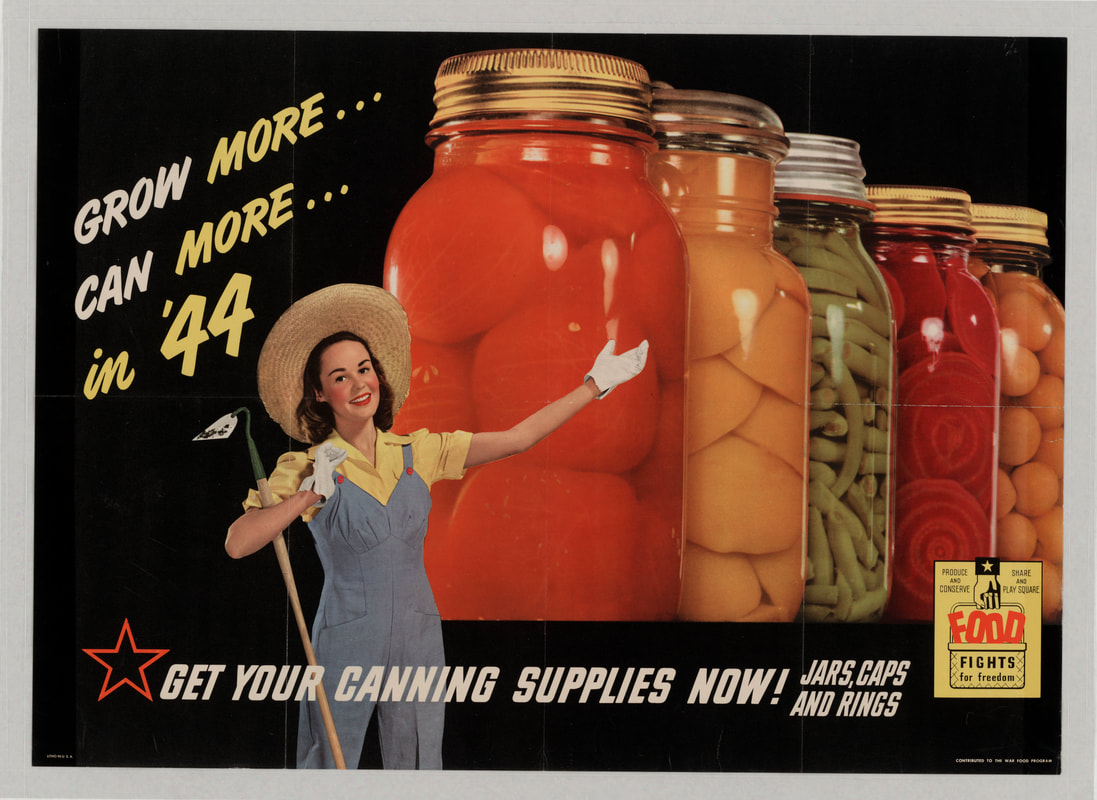
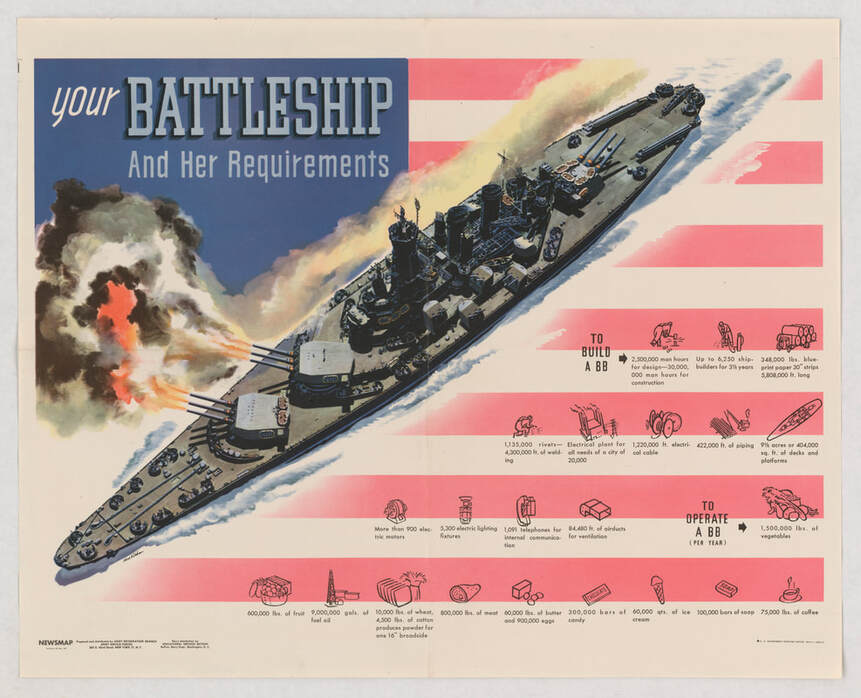

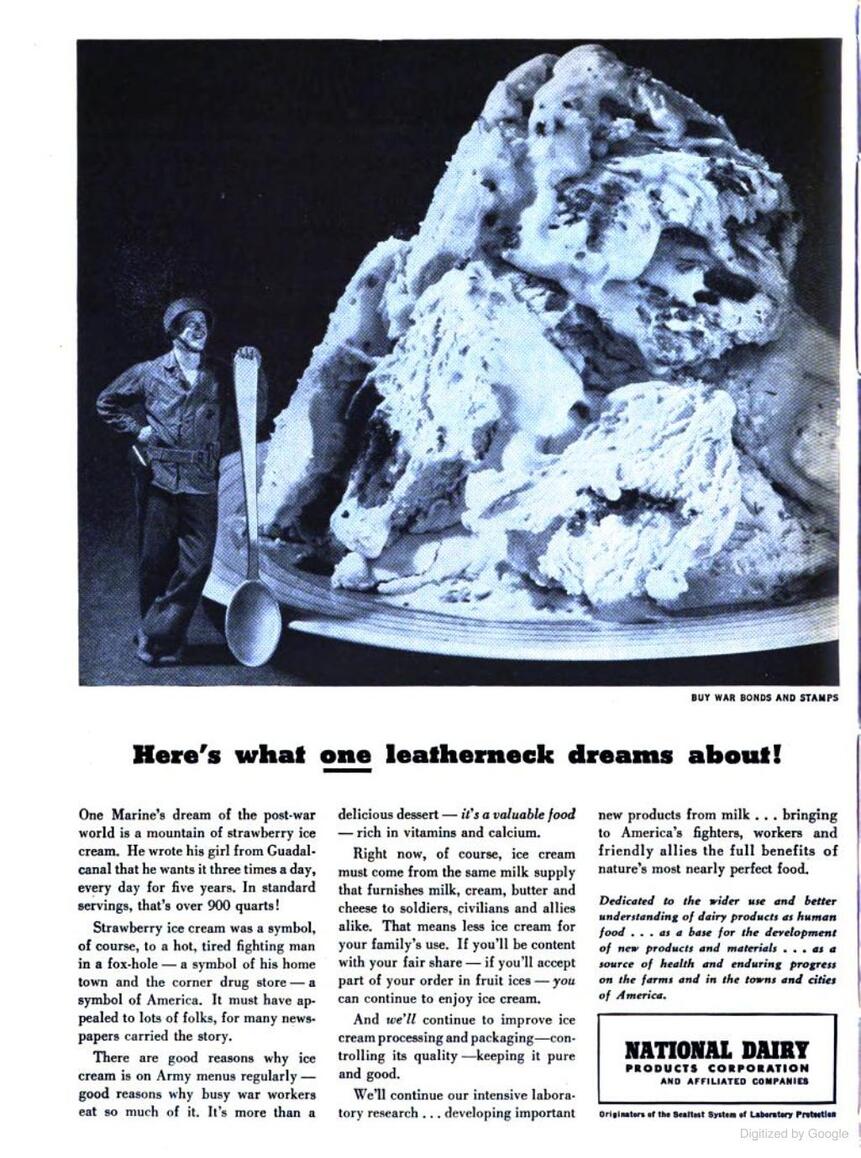
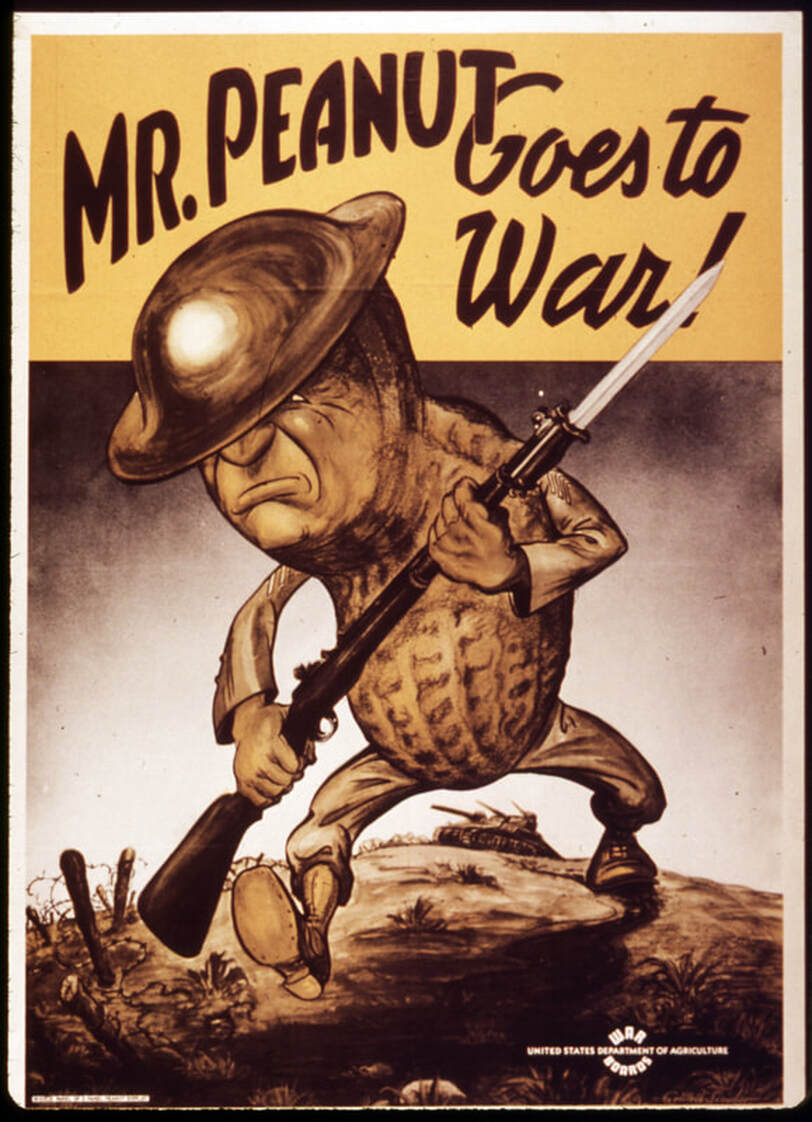
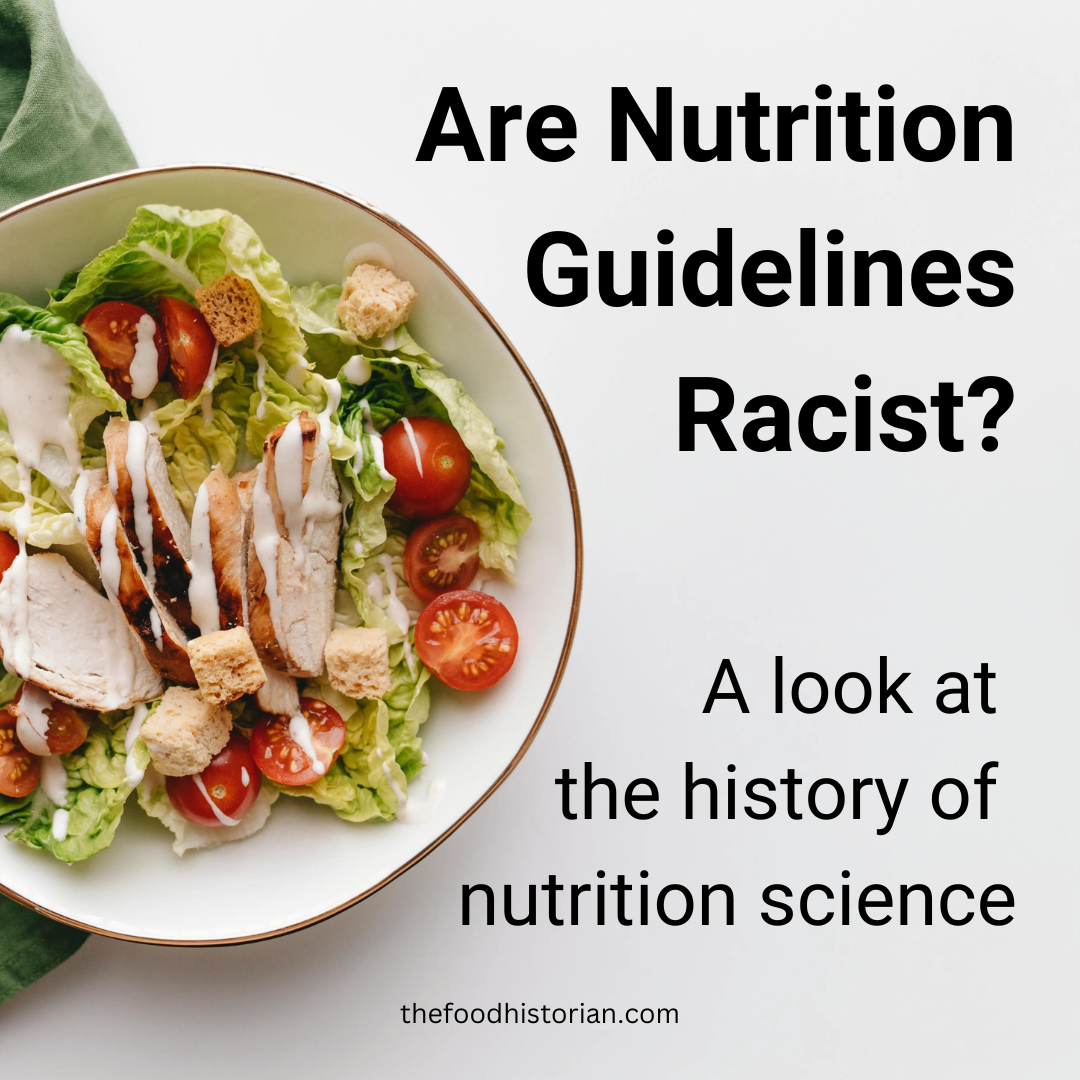
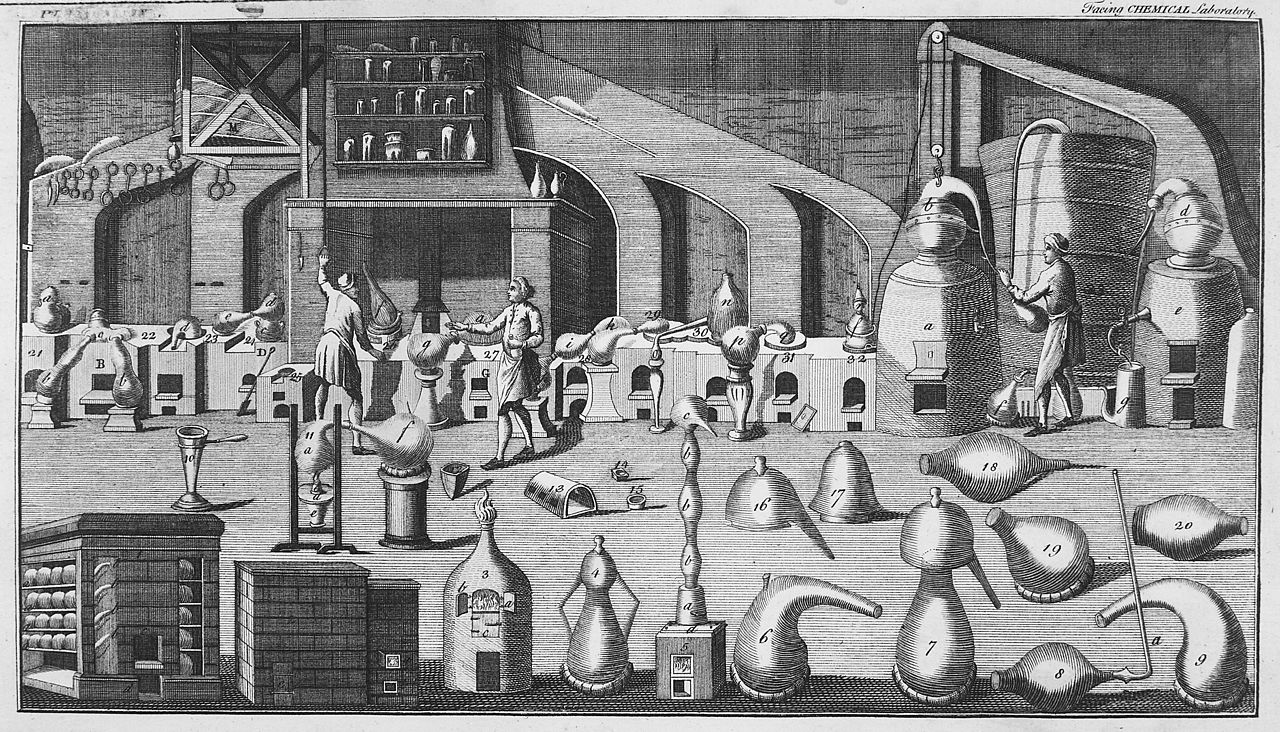
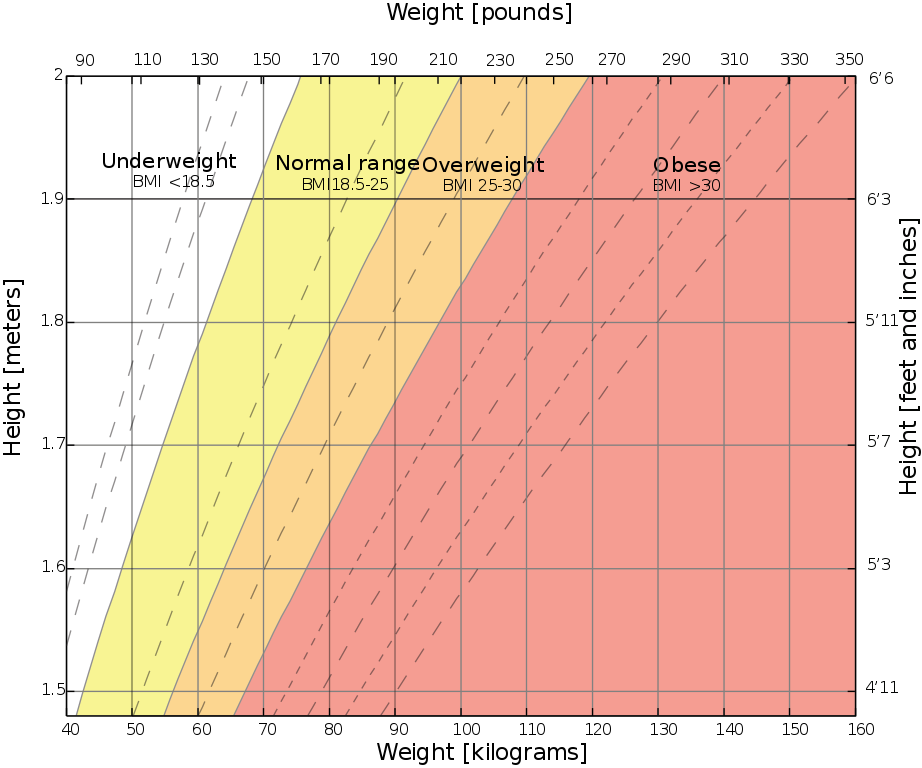
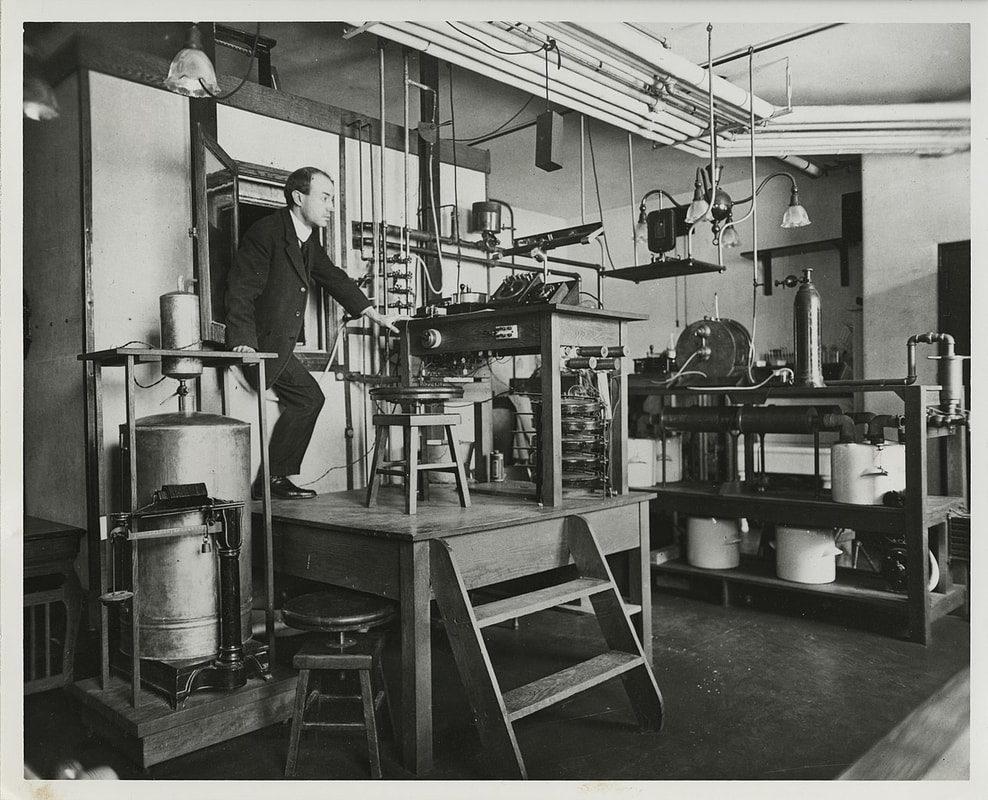
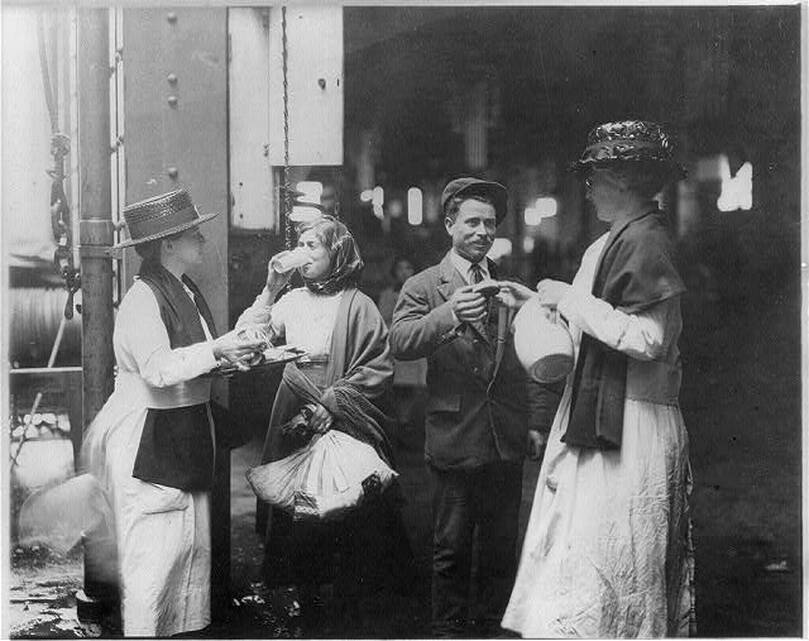
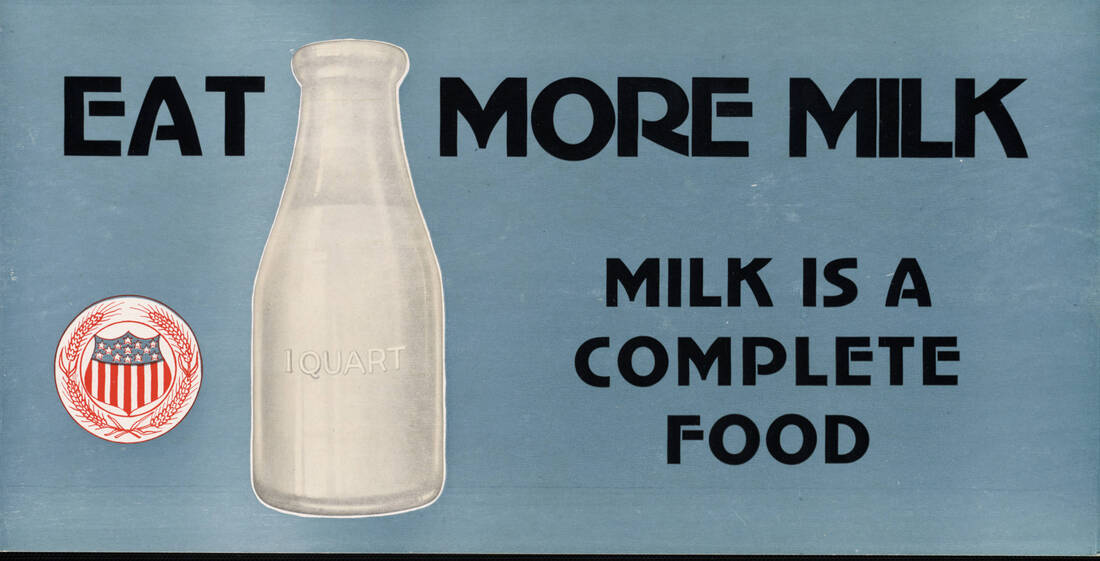
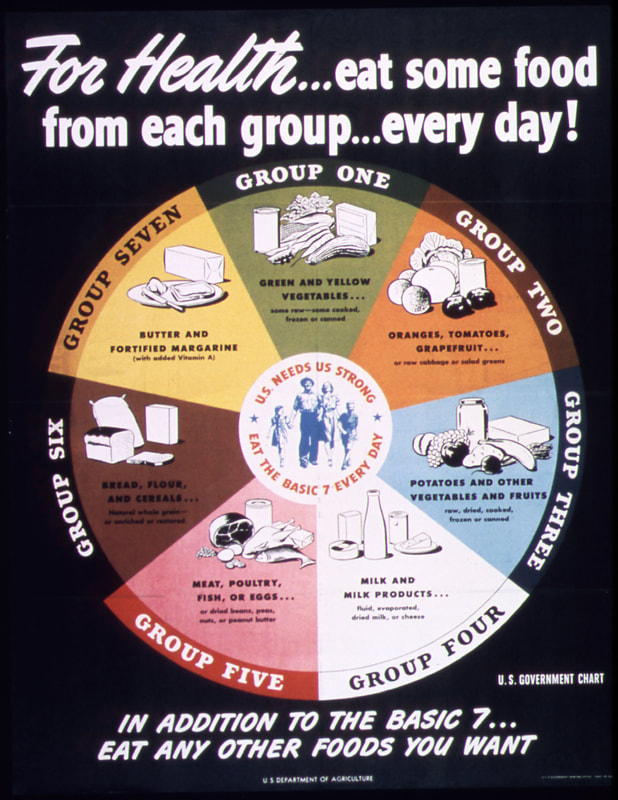
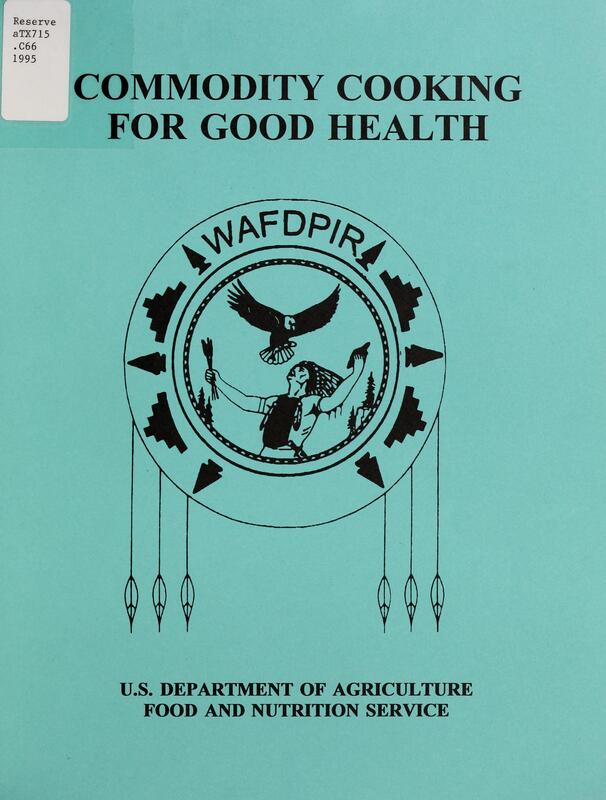

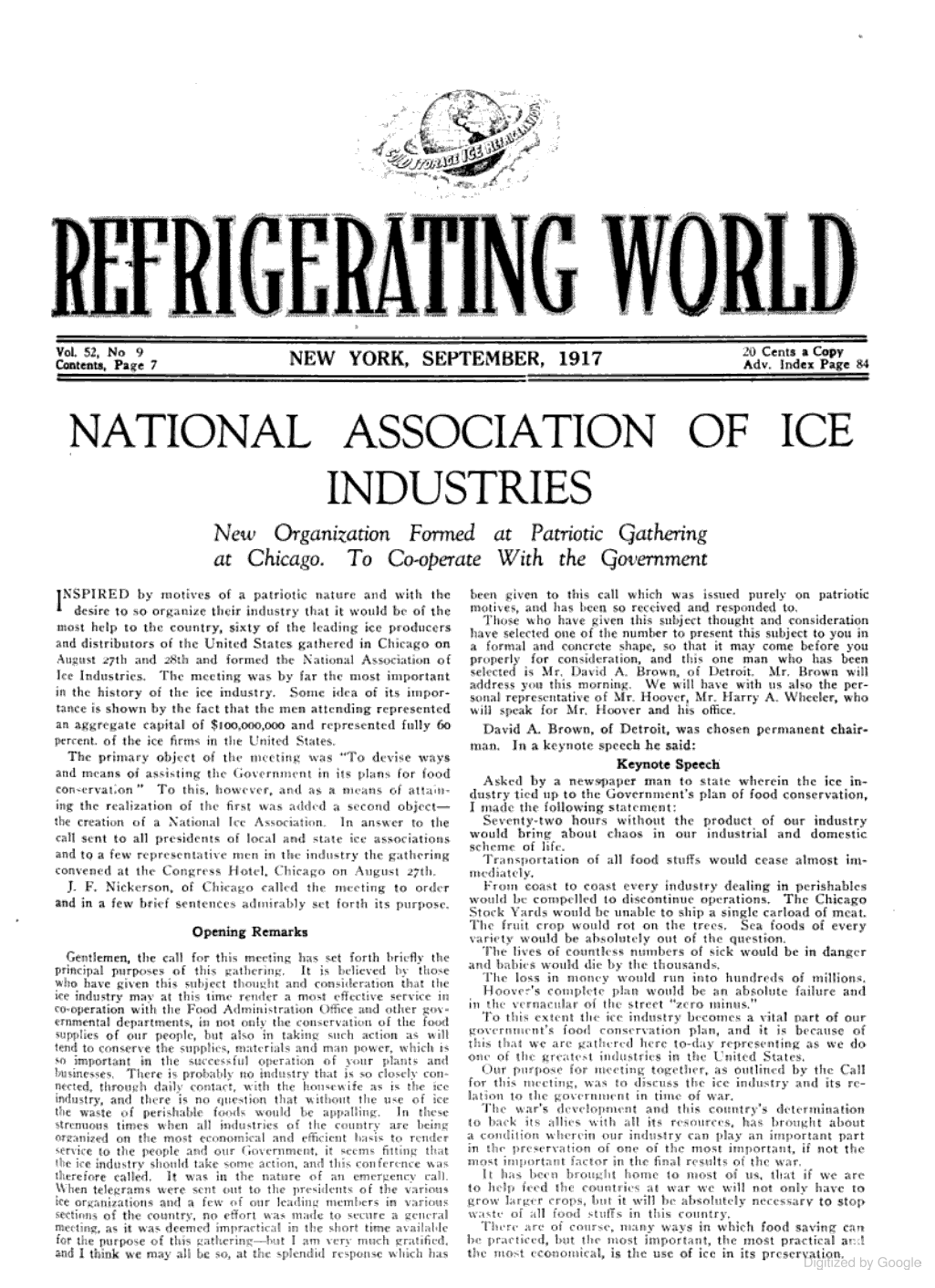
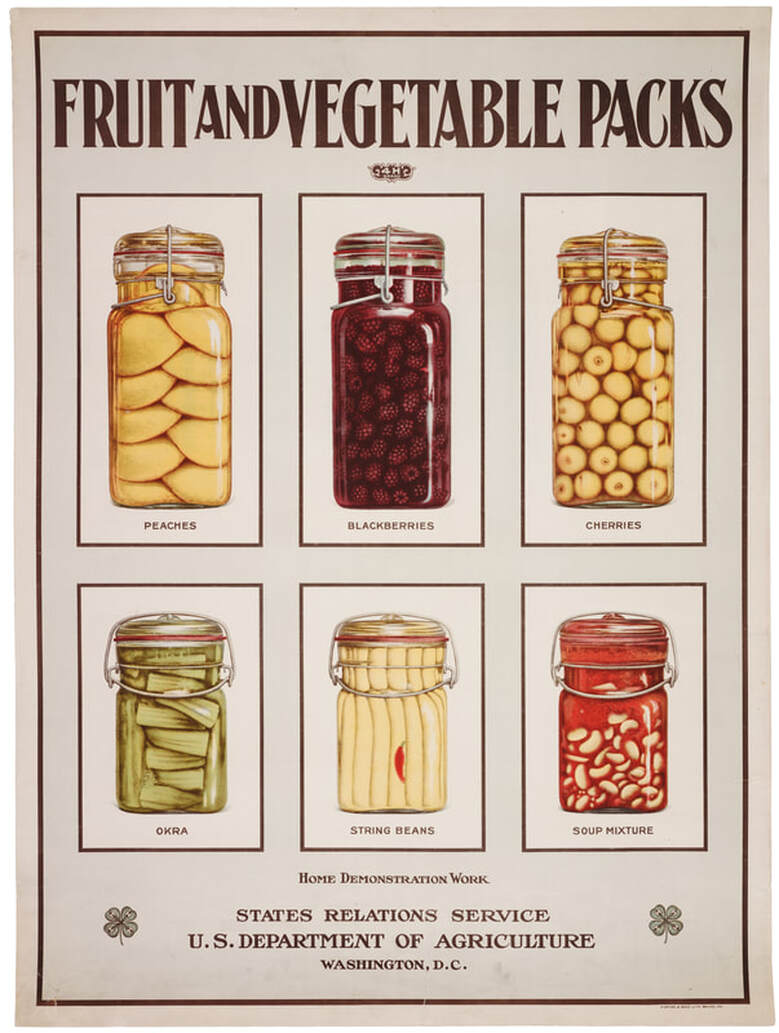
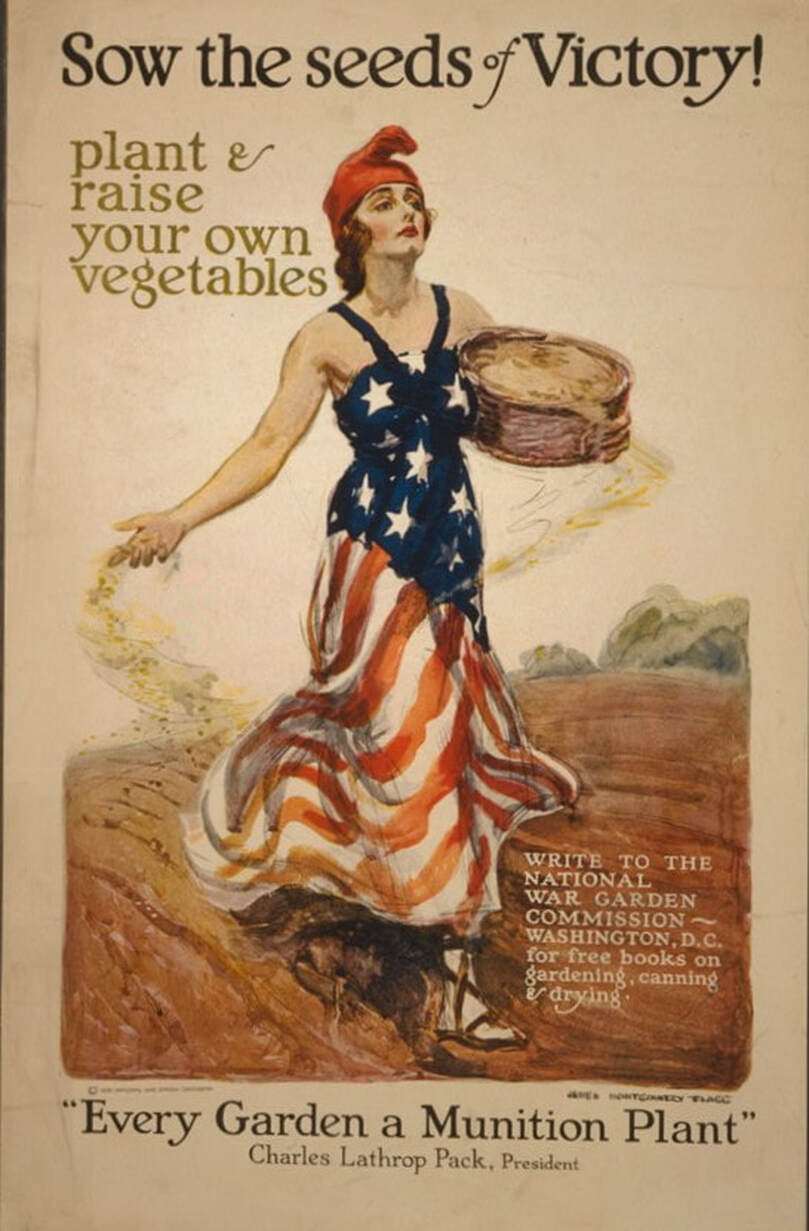
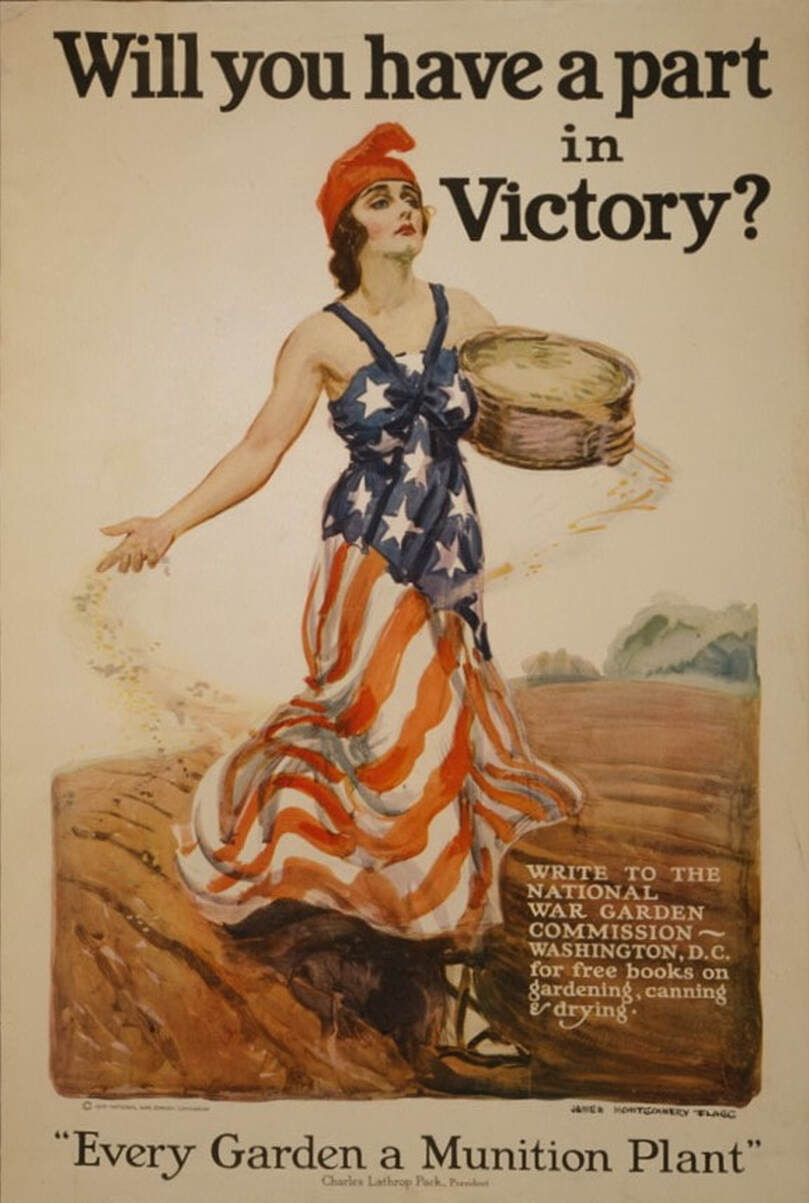
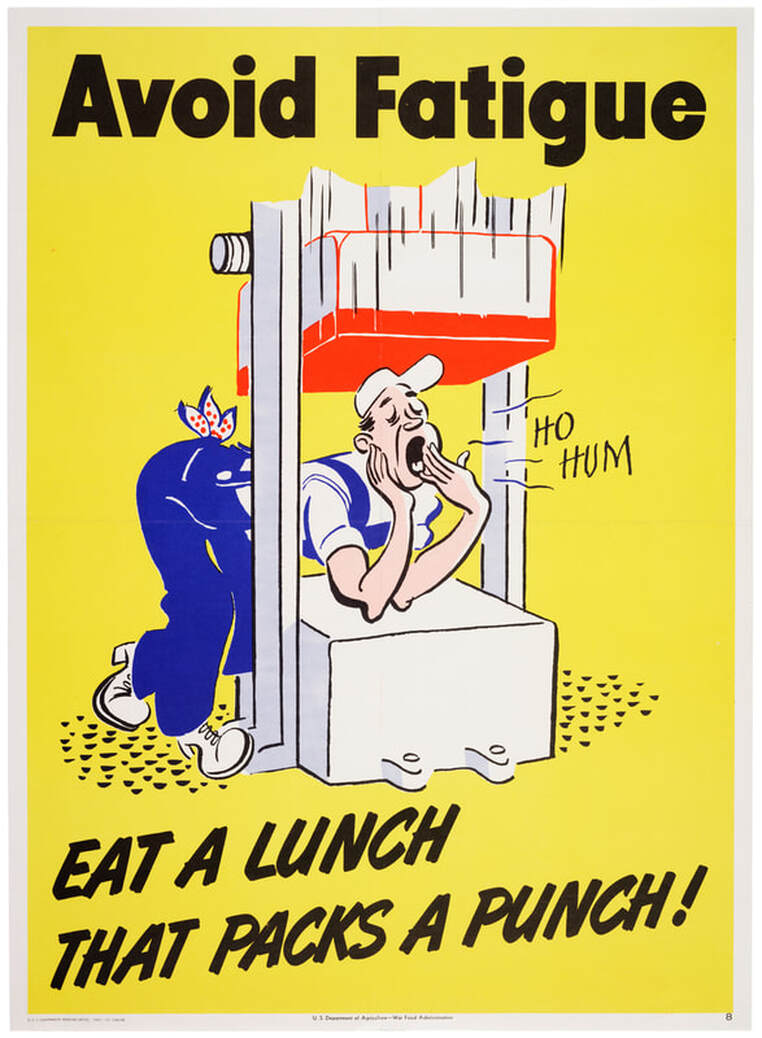
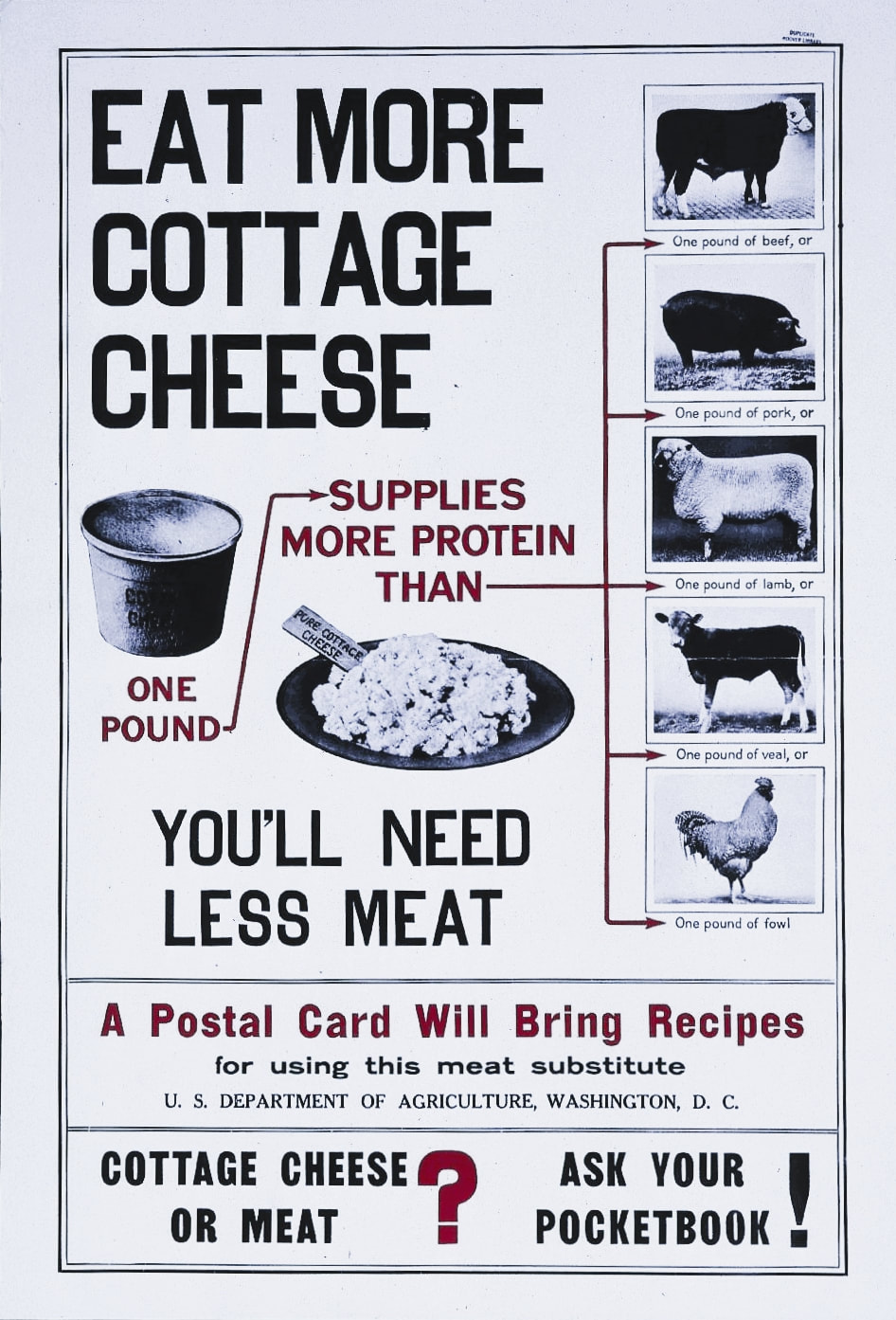
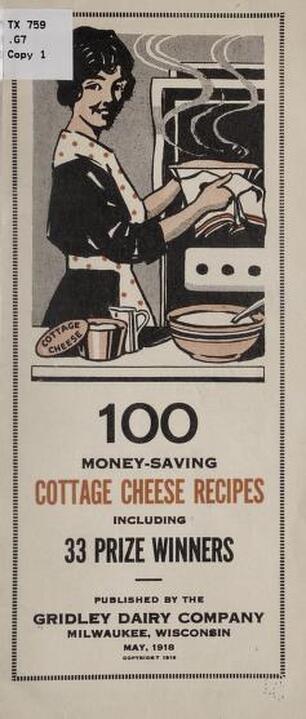
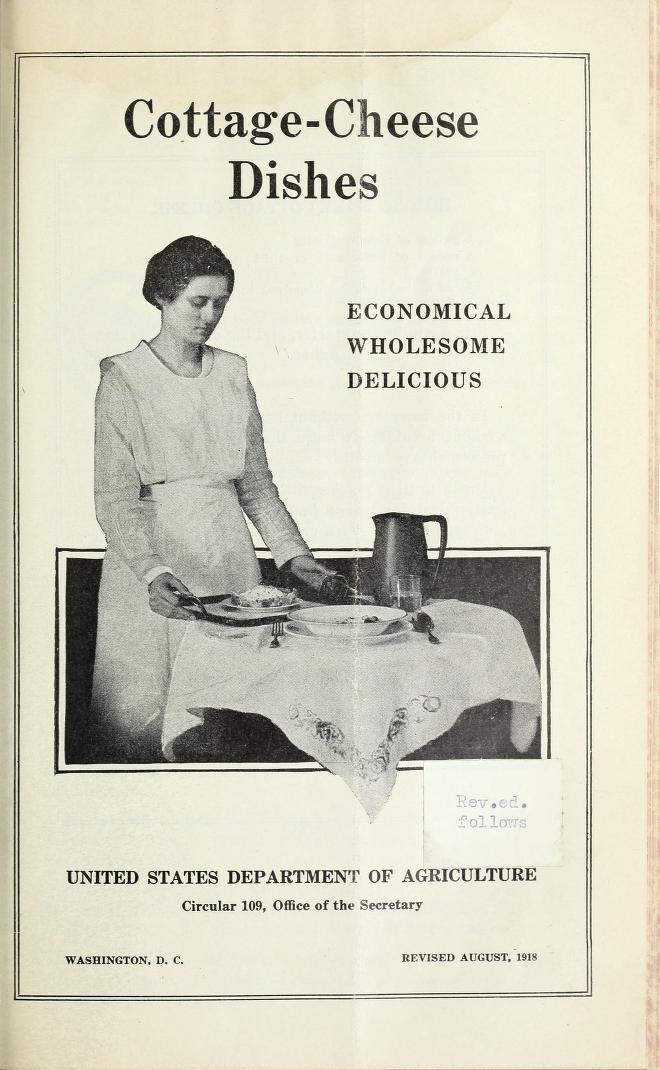
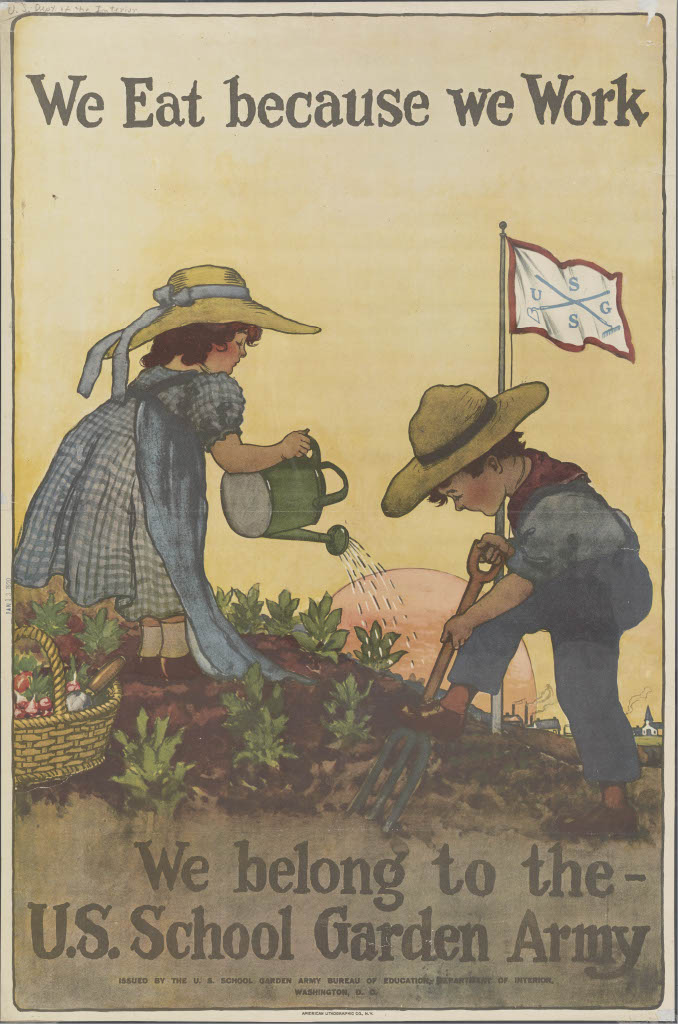

 RSS Feed
RSS Feed